My Sound Cards
Just as I've done with graphics cards, I have acquired a small collection of sound cards since 1992 and currently have about 36 in all. This page catalogues these. Unlike the graphics cards, however, there is only one general rule when it comes to sound cards and being "period correct" for DOS - that they really need to be for the ISA bus.
This is because before Windows 95, all games interacted with the sound card via a specific I/O address, IRQ (interrupt request line) and DMA (direct memory access) channel. With the advent of the PCI bus, sound cards that sat on it were addressed in a different way, thus making DOS games unable to even 'see' the sound card. There are a few exceptions though.
I have also included external synthesizer modules here, of which I have 5.
This catalogue is listed by manufacturer or if it's a lesser-known clone card it will be listed under the originating manufacturer of the reference design.
Ad Lib


An Amstrad-branded Ad Lib clone card
From my Dad's Amstrad PC2286, bought around 1992
This was the first sound card we had in our family. It came with the Amstrad PC2286 that we bought from a computer auction (Southern Computer Auctions?) in 1992.
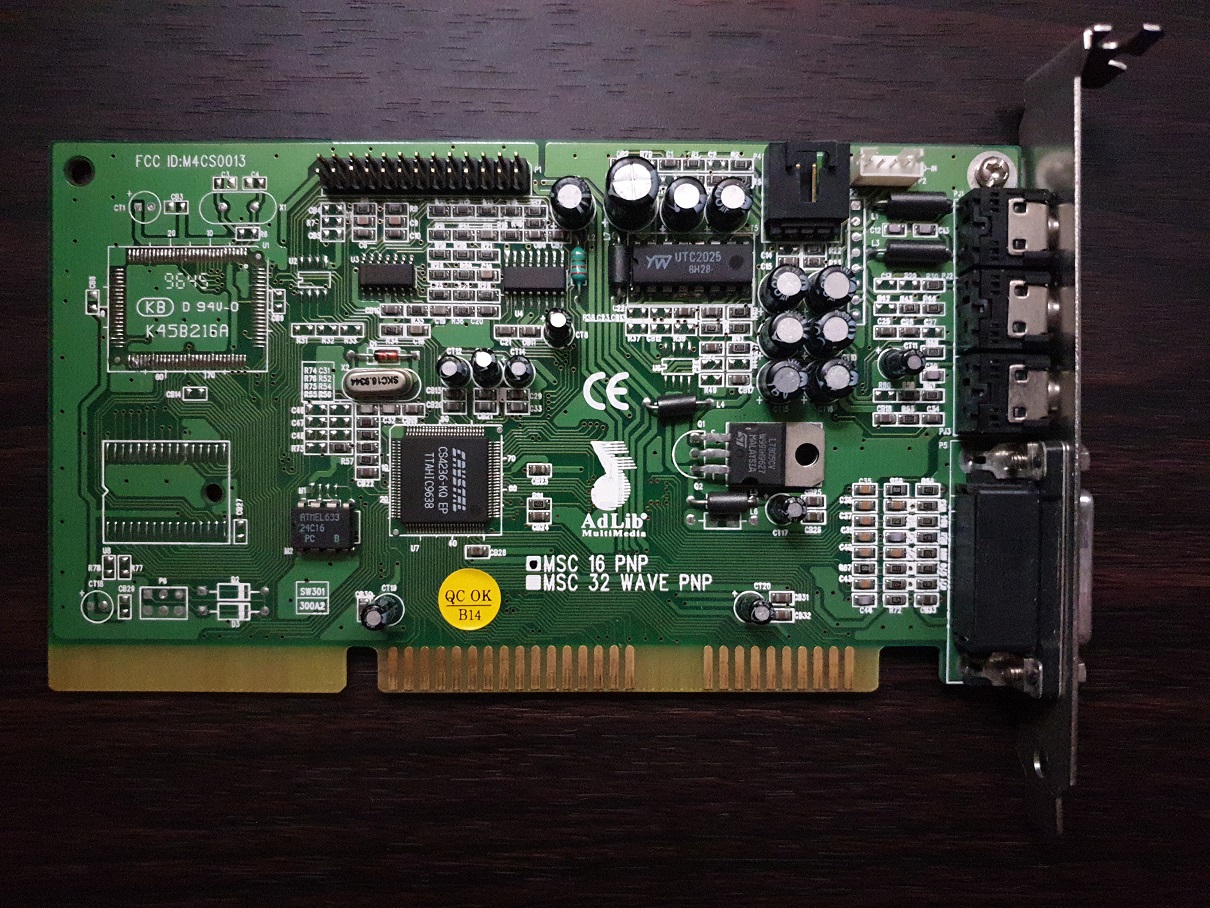

An Ad Lib MSC16 PnP (ca. 1996)
Bought in early 2021 for £21
This was from an online auction that came up where the card was not well described - just a part number. I noticed the Ad Lib musical note logo and did some background. I will do a more in-depth review at some point on this card, but in short it's a post Ad Lib Gold-era card based around the Crystal CS4236-KQ chip. This means it is compatible with Ad Lib, Sound Blaster, Sound Blaster Pro and Windows Sound System standards.
Avance Logic

ALS100
Bought for $11 in November 2020
The ALS100 supports Ad Lib, Sound Blaster, and Sound Blaster 16 standards. This one has a clone of the Yamaha YMF262 chip, called the LS262.
Aztech Labs
Aztech went down a similar route as Creative Labs - to saturate the market with many model variants, but at a cheaper price point. They were also very successful at striking up OEM deals to have their cards bundled with off-the-shelf computers. These days Aztech cards are fairly rare, but look out for OEM variants that are more common - a lot were Packard-Bell branded so look for a black and white sticker on the main chip and it's likely it is an Aztech card. I have these five in my collection:


Sound Galaxy NX Pro (ca. 1993)
Picked up for £30 in November 2017
I was pleased to find this late 1st-generation card from Aztech, as I wanted one of their curious cards that supported 5 sound standards (quantity over quality!). The I38-MMSD802 supports Ad Lib, Sound Blaster Pro, Covox Speech Thing, Disney Sound Source and Windows Sound System.
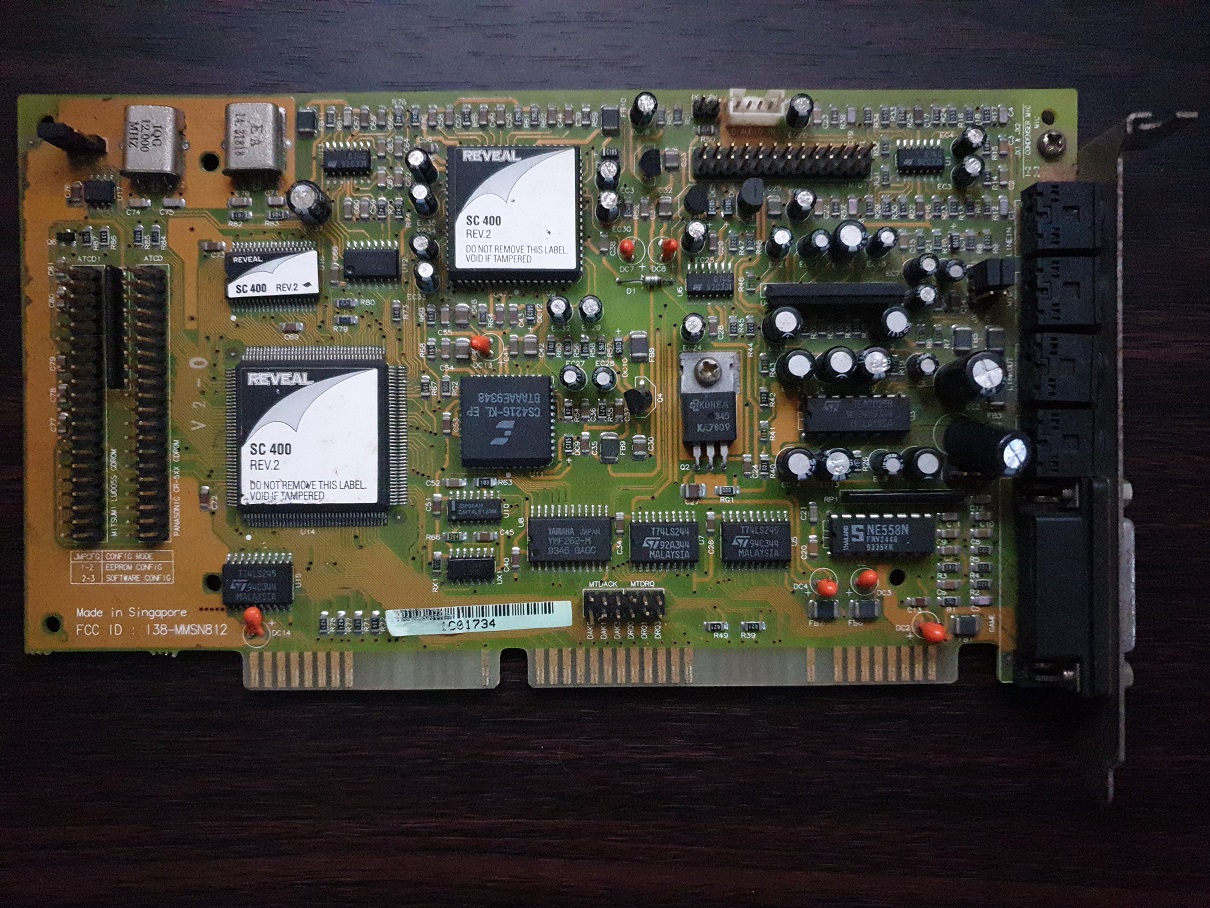

Sound Galaxy NX Pro Extra (ca. 1993)
Bought in November 2021 for $45
The I38-MMSD812 was one of the last 1st-generation cards released by Aztech Labs. My research indicates that this model dropped support for Covox Speech Thing and Disney Sound Source, so is only Ad Lib, Sound Blaster Pro and Windows Sound System-compatible.


Sound Galaxy Nova 16 Extra (ca. 1994)
Bought in October 2021 for £25
The Nova 16 Extra, model I38-MMSN811, is the only 2nd-generation Aztech card in my collection. It supports Ad Lib and Sound Blaster Pro standards. The first time I installed it for testing I got a loud bang and sparks - turns out a yellow bead capacitor at DC3 (lower-right) blew! No other damage, and after replacing the cap the card works just fine. I did a full review of this card in October 2021.


Sound Galaxy Multimedia Pro 16, ca. 1994
Bought in October 2021 for £15
The first 3rd-gen card I picked up was the Multimedia Pro 16, model I38-MMSD845. Supports Ad Lib, Sound Blaster Pro II, and Windows Sound System. The MIDI/game port is now fully MPU-401 compatible in UART mode only and the card suffers no 'hanging note' bug when this is used.
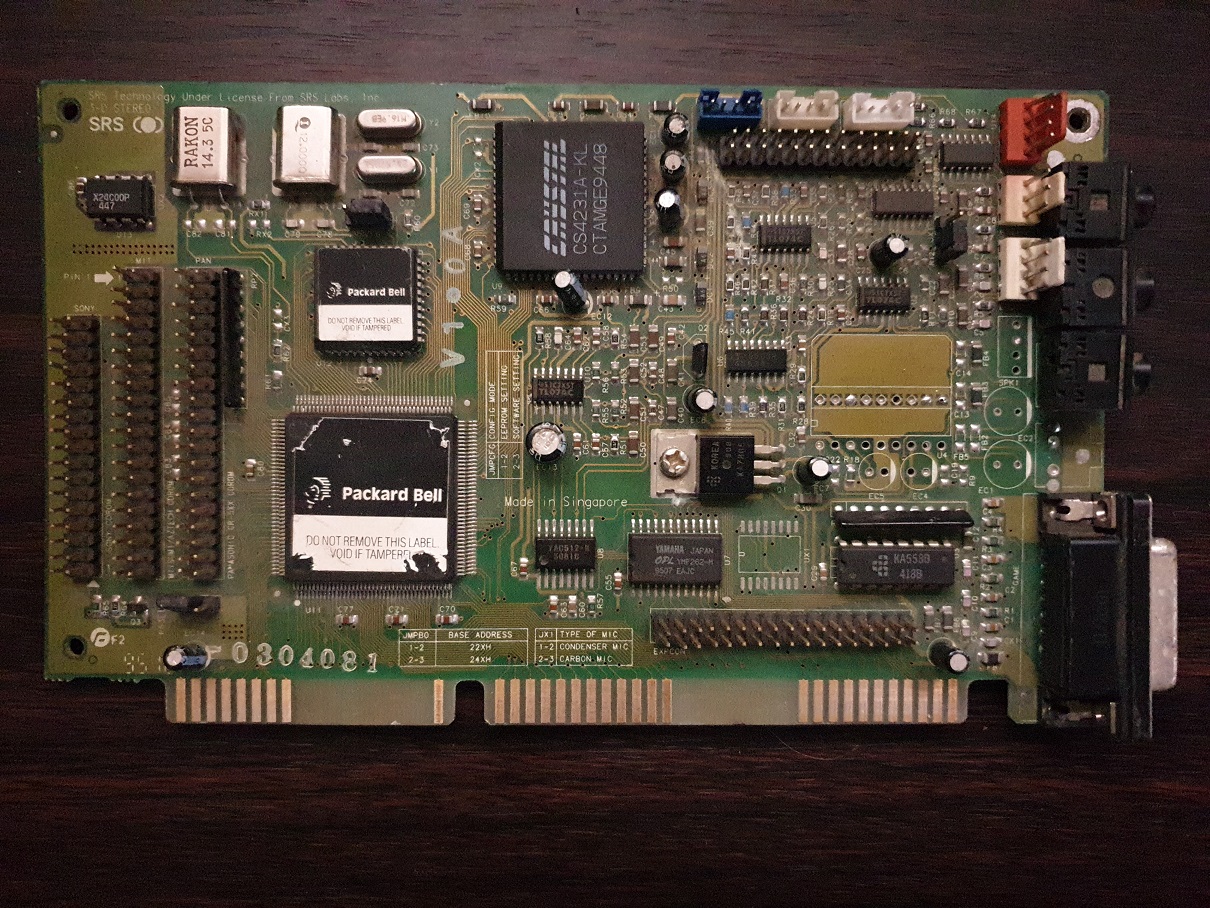

Sound Galaxy Nova 16 Extra II-3D, ca. 1994
Bought for £25 in November 2017
The second 3rd-generation card I bought was this Nova 16 Extra II-3D, model I38-MMSN846. Supports Ad Lib, Sound Blaster Pro II, and Windows Sound System. The MIDI/game port is now fully MPU-401 compatible in UART mode only and the card suffers no 'hanging note' bug when this is used.
Creative Labs
Whether you love them or hate them, you will likely have owned a Creative Labs card at some point. I have 11 cards in my collection, and am still looking for early 8-bit Sound Blaster cards for a reasonable price.
.jpg)
.jpg)
Sound Blaster Pro II (CT1600), ca. 1991
Bought for £39 in June 2023
I was very pleased to pick up this SB Pro 2 for so little money (prices for older Creative cards have skyrocketed in the past 5 years - fortunately a lot were sold so rarity is not so much of a selling point), and despite it lacking a backplate this version does have the later CT1336A bus interface chip. I did a full review of this card in June 2023.


Sound Blaster 16 (CT2940), ca. 1995
Cannot recall where I got this card
This was the part of the third generation of Sound Blaster 16s. The CT2940 was the first card to come with Creative's OPL3 clone which they called CQM, and is considered to produce poorer FM sound than a true OPL3. Some CT2940s have this CQM chip while others have real Yamaha YMF289B. Mine is fortunately the latter. At its heart is the CT2502 ViBRA Pro chip which comprises the mixer, DSP, bus interface and DAC. The card is fully Plug & Play, making it better-suited to running Windows games than pure DOS. It also has an IDE interface for CD-ROM drives and a Wave Blaster header.

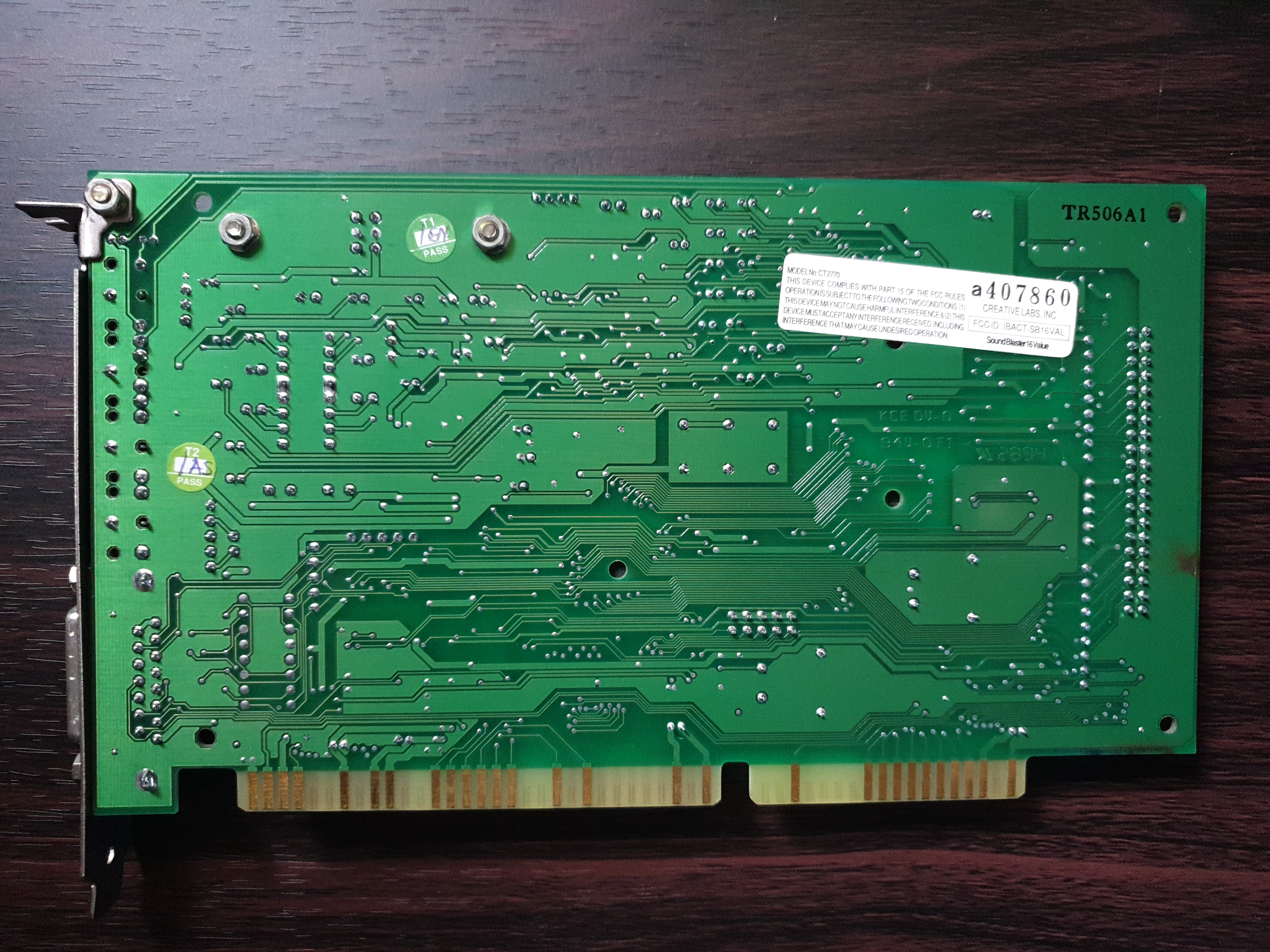
Sound Blaster 16 Value (CT2770), ca. 1995
Acquired in September 2019 in a bundle with an ABIT AB-BH6 motherboard
I did a full review of this CT2770 back in late 2021. It has a Creative/Panasonic interface for CD-ROM drives. This is revision A of the card which eliminated obsolete CD-ROM headers that were never used.
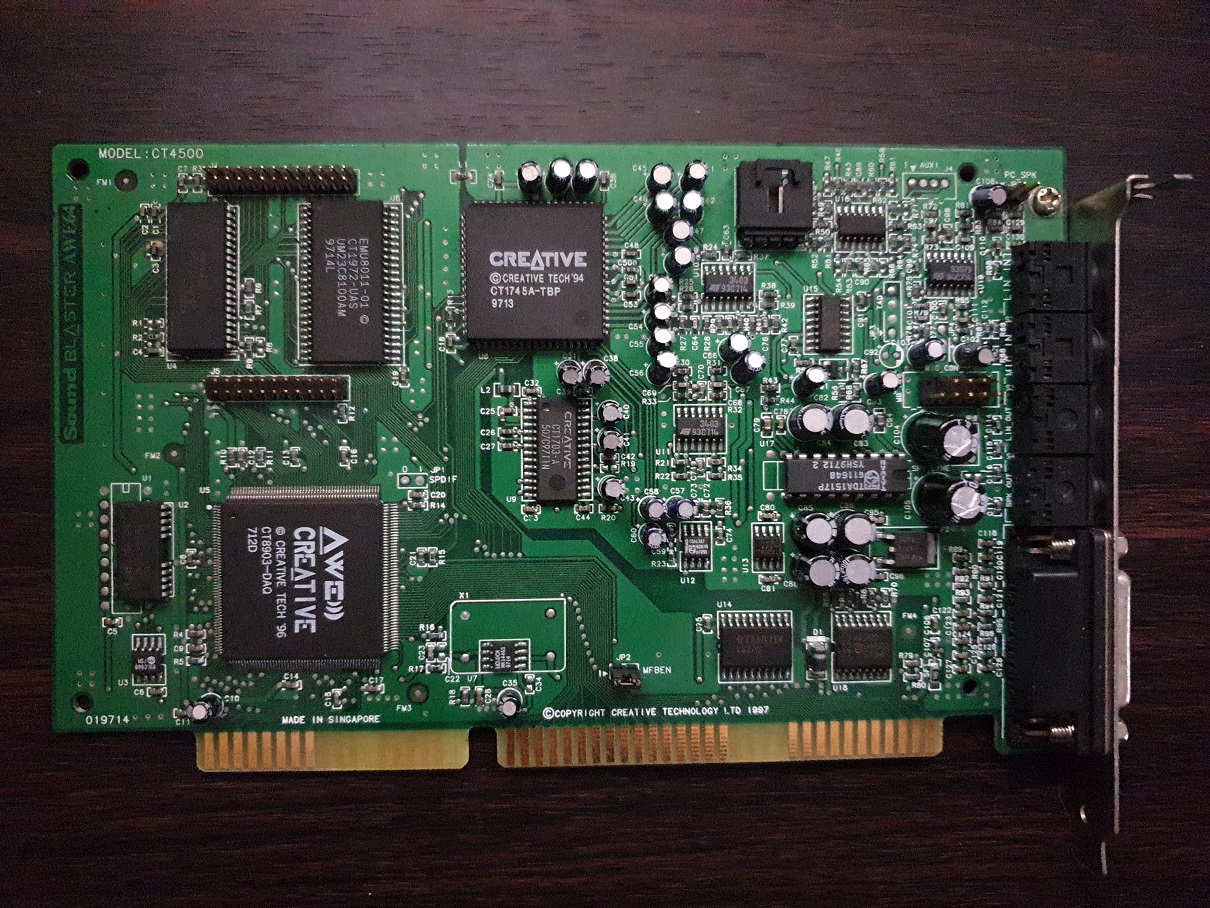
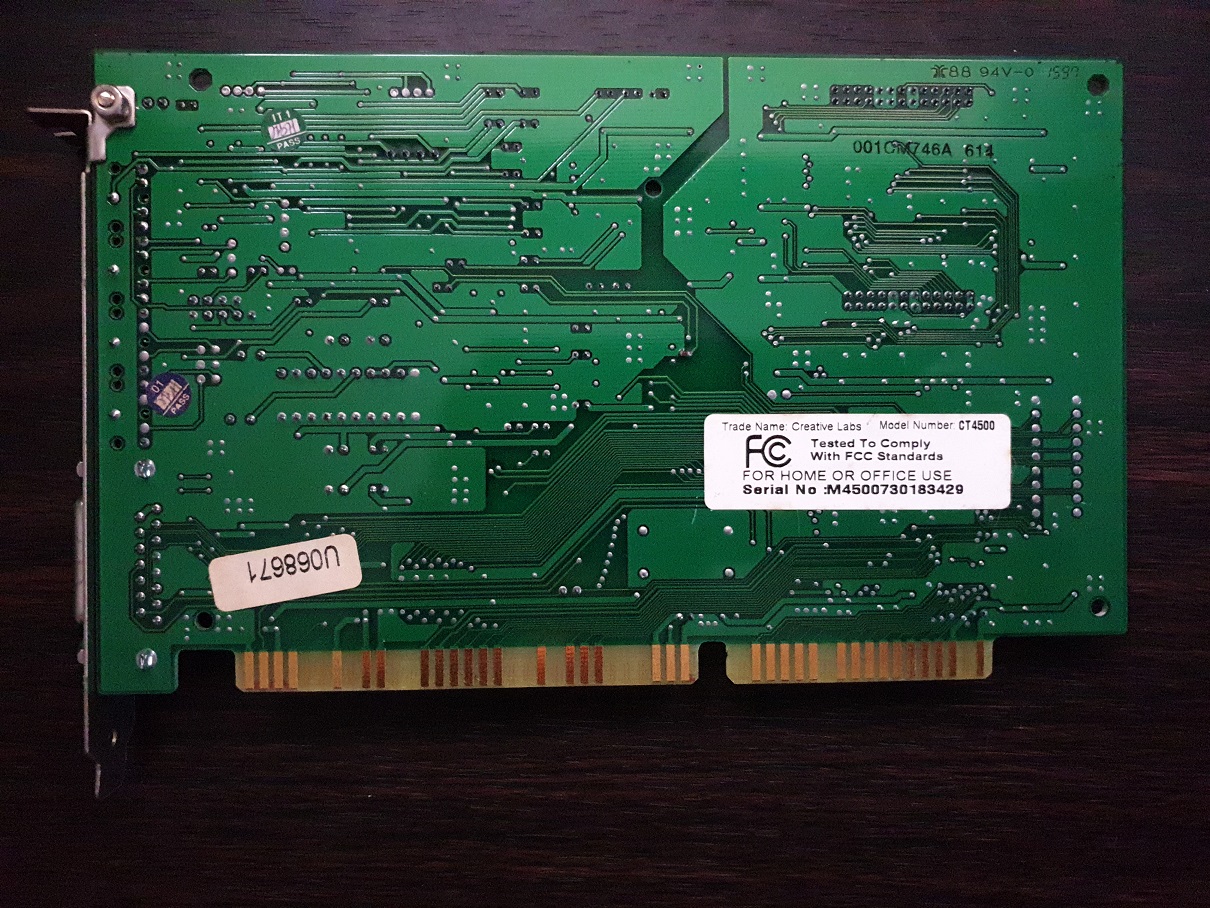
Sound Blaster AWE64 Value (CT4500), ca. 1997
Bought in December 2018 for £25
The CT4500 supports Ad Lib, Sound Blaster, Sound Blaster Pro, Sound Blaster 16 and 32 - for DOS gaming this is as good as an AWE32; better if you consider its much cleaner audio output. Having said that, I'm not a fan of the AWE range - the amount of conventional memory used by the necessary drivers make it a card I rarely use.


Sound Blaster AWE64 Value (CT4500), ca. 1997
Acquired in September 2019 in a bundle with an ABIT AB-BH6 motherboard
Without knowing, I became the owner of a second AWE64 Value, also a CT4500. This one I couldn't seem to get music out of, only digital audio (sound effects). The Creative "DIAGNOSE" utility worked however, and played music without any problem - very strange.
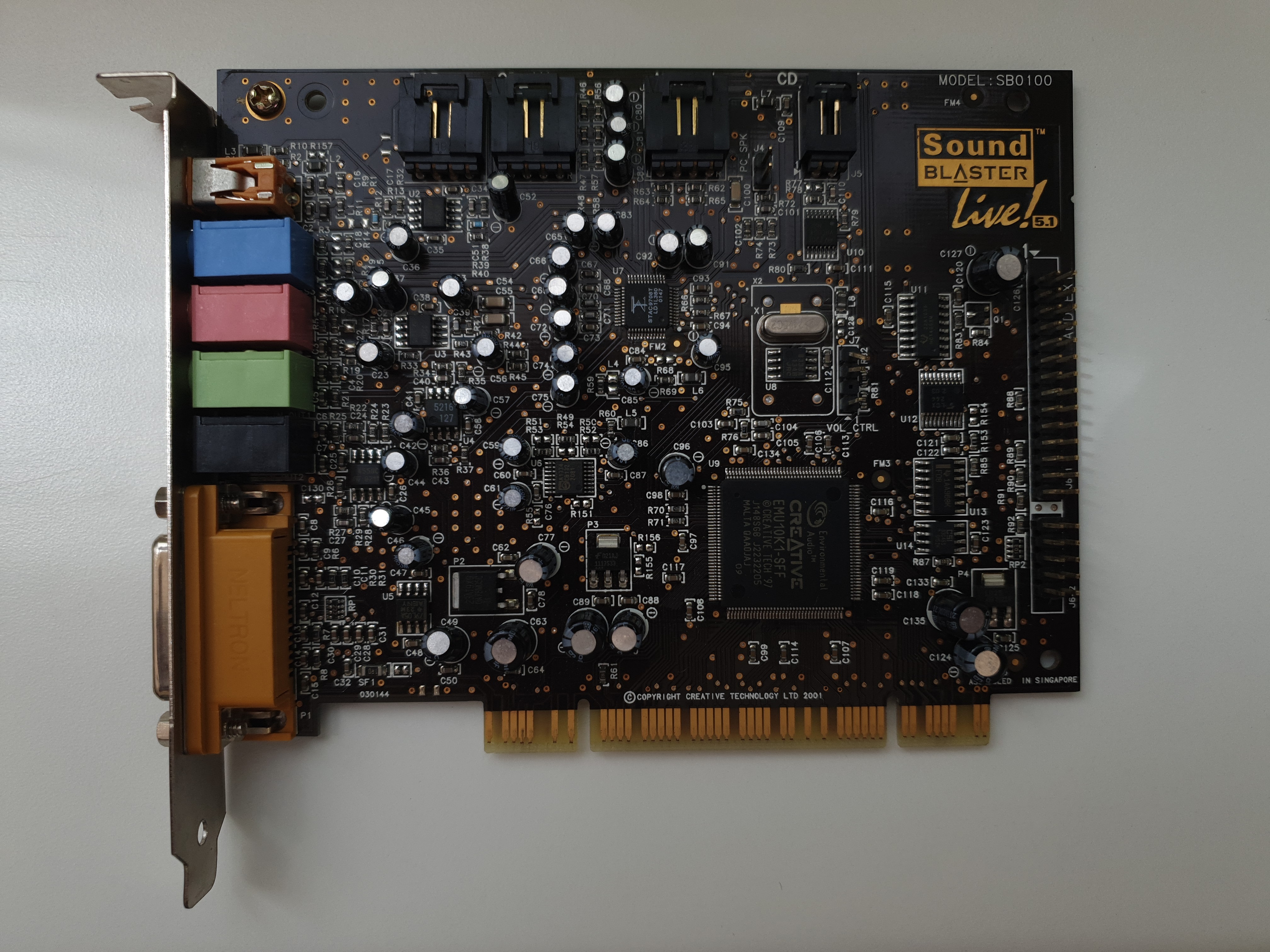

Sound Blaster Live! 5.1 (SB0100), ca. 2001
Unknown origin
The Live! 5.1 is based on the EMU-10K chip. This one, SB0100, is *not* the Dell OEM version of CT4830 (the SB0200 and SB0220) which is an inferior card with an EMU-10K1X which had a software-based DSP instead of a hardware one. Phil from Phil's Computer Lab rates the SB0100 highly, considering it his "go-to" sound card for Windows 98, not as good as the Audigy2 ZS, but easier to install the drivers.
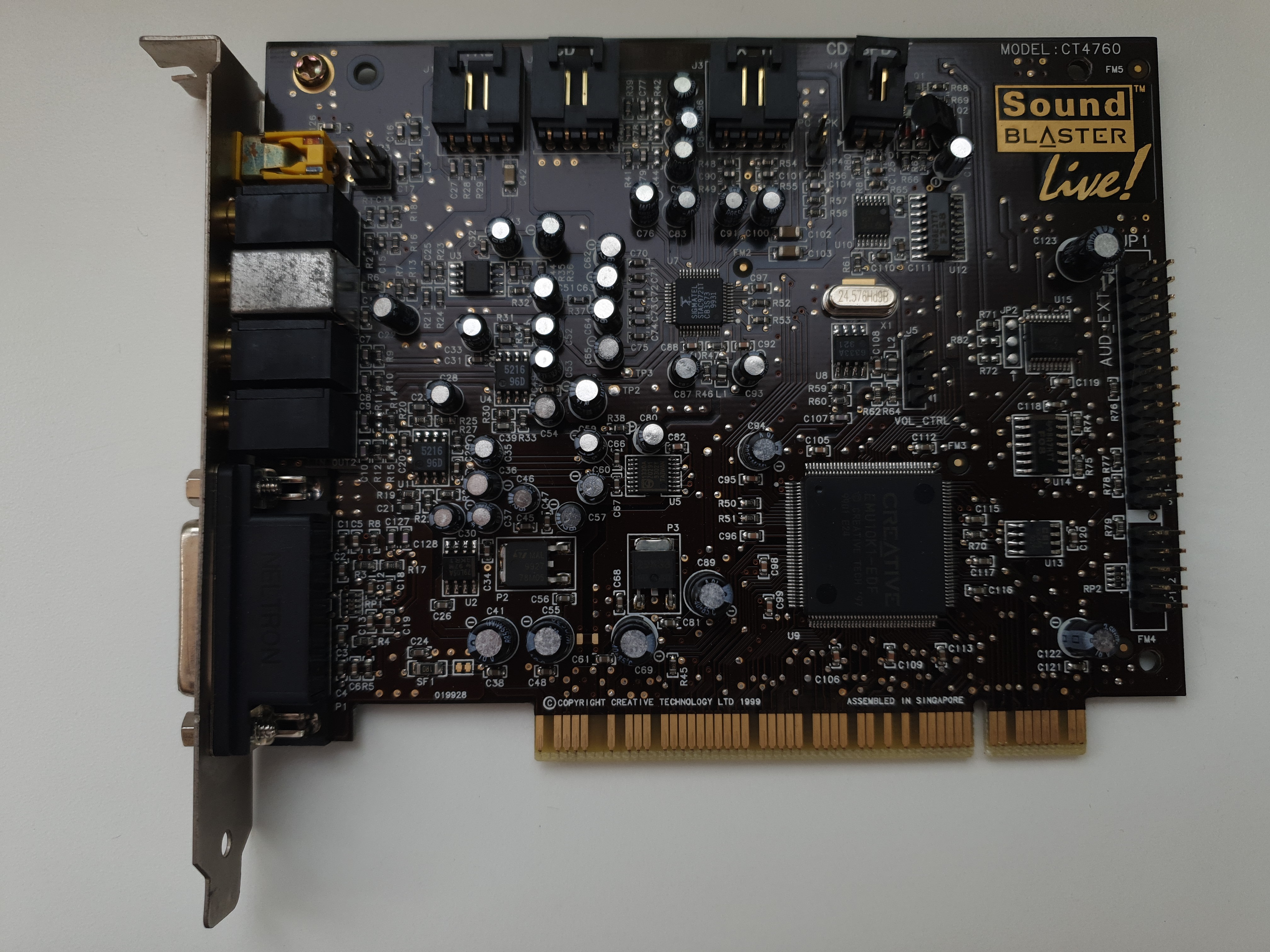

Sound Blaster Live! Value (CT4760), ca. 2000
Unknown origin
The Live! Value is another EMU-10K-based card. Being a PCI card it's only good for Windows gaming.


Sound Blaster ViBRA 128 (CT4810), ca. 2000
Bought in a bundle in December 2022 for $55.80 USD, including a Trident 3DImage 9750, a C&T-based ISA SVGA card, a Tekram CaptureTV M200 card, and an ELSA Gladiac GeForce2 MX400.
This ViBRA 128 card is interesting in that it's the only one I am aware of that used the AudioPCI ES1373 chip. The ES1370 (aka CT5507 after Creative Labs acquired Ensoniq) and ES1371 (aka CT5880) chips are much more common on cards of this era. The card cost me $4.20, not including P&P.
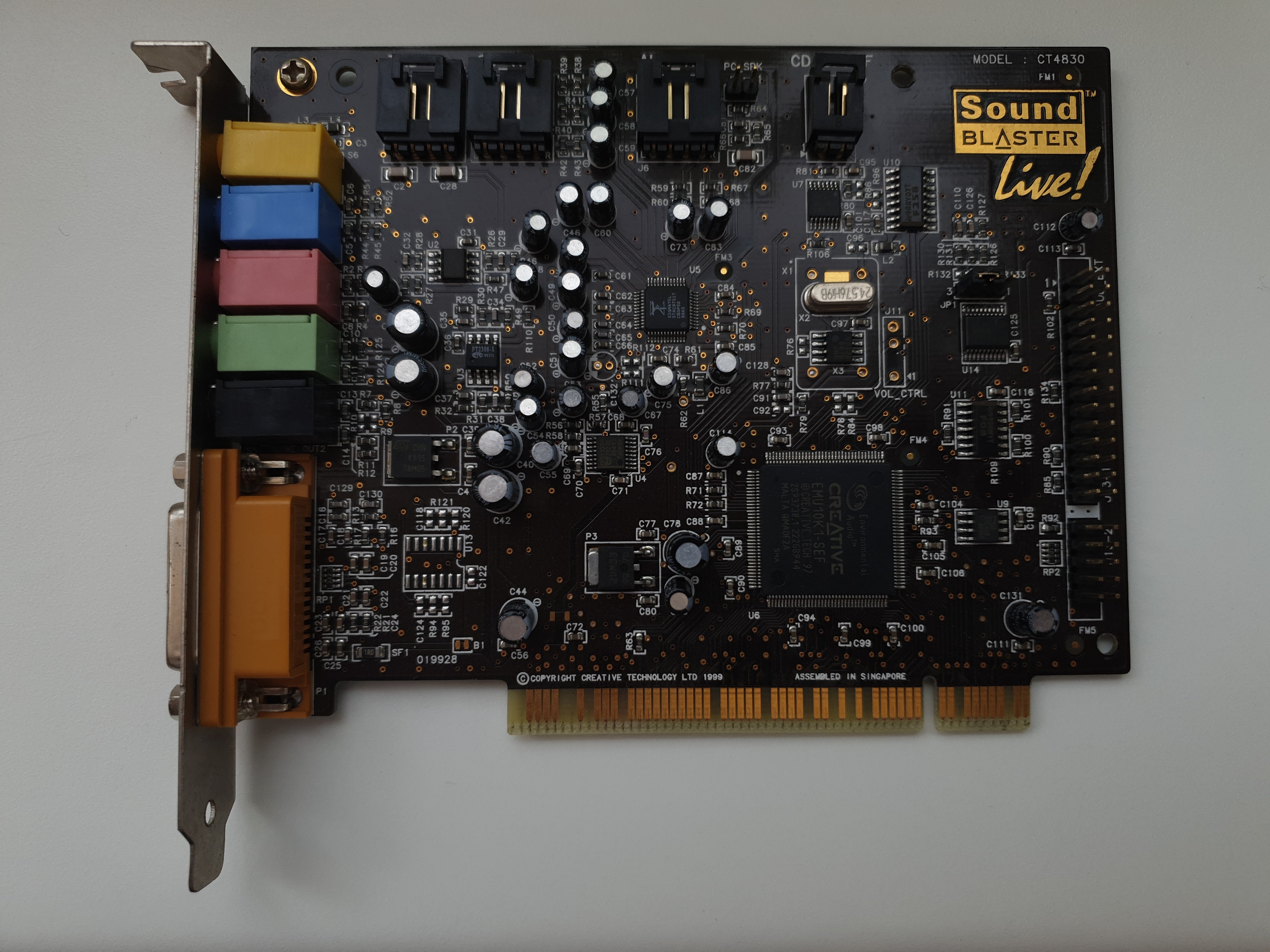

Sound Blaster Live! Value (CT4830), ca. 1999
Unknown origin
Where did I pick up all these SB Live! cards from? They are extremely common though, and not particularly collectible. The CT4830 got Creative's EMU10K1 audio processor, which provided General MIDI wavetable effects. The EMU10K1 can be considered the successor to the EMU8000 used on the AWE32 [and Sound Blaster 32] and AWE64 range.
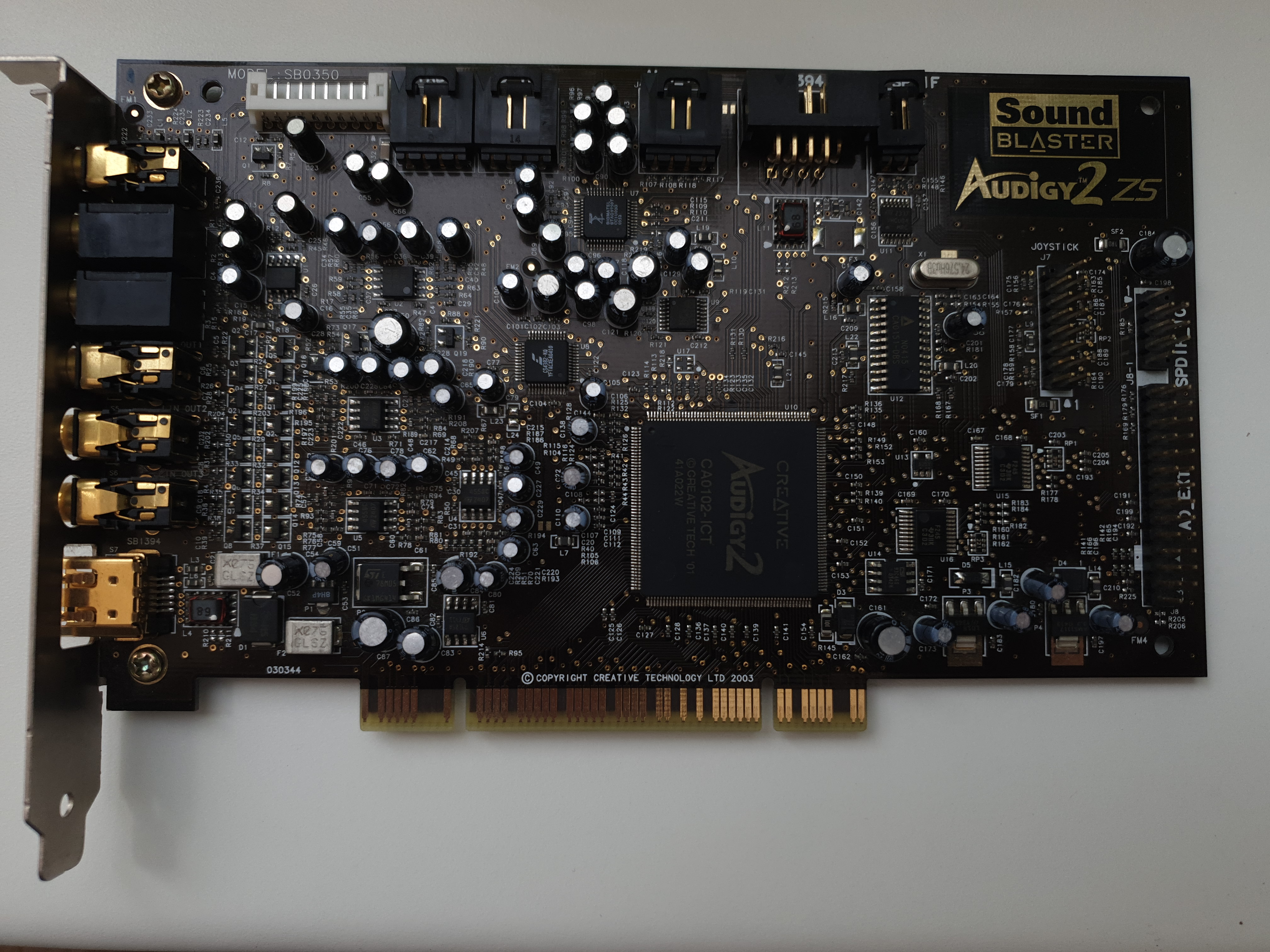
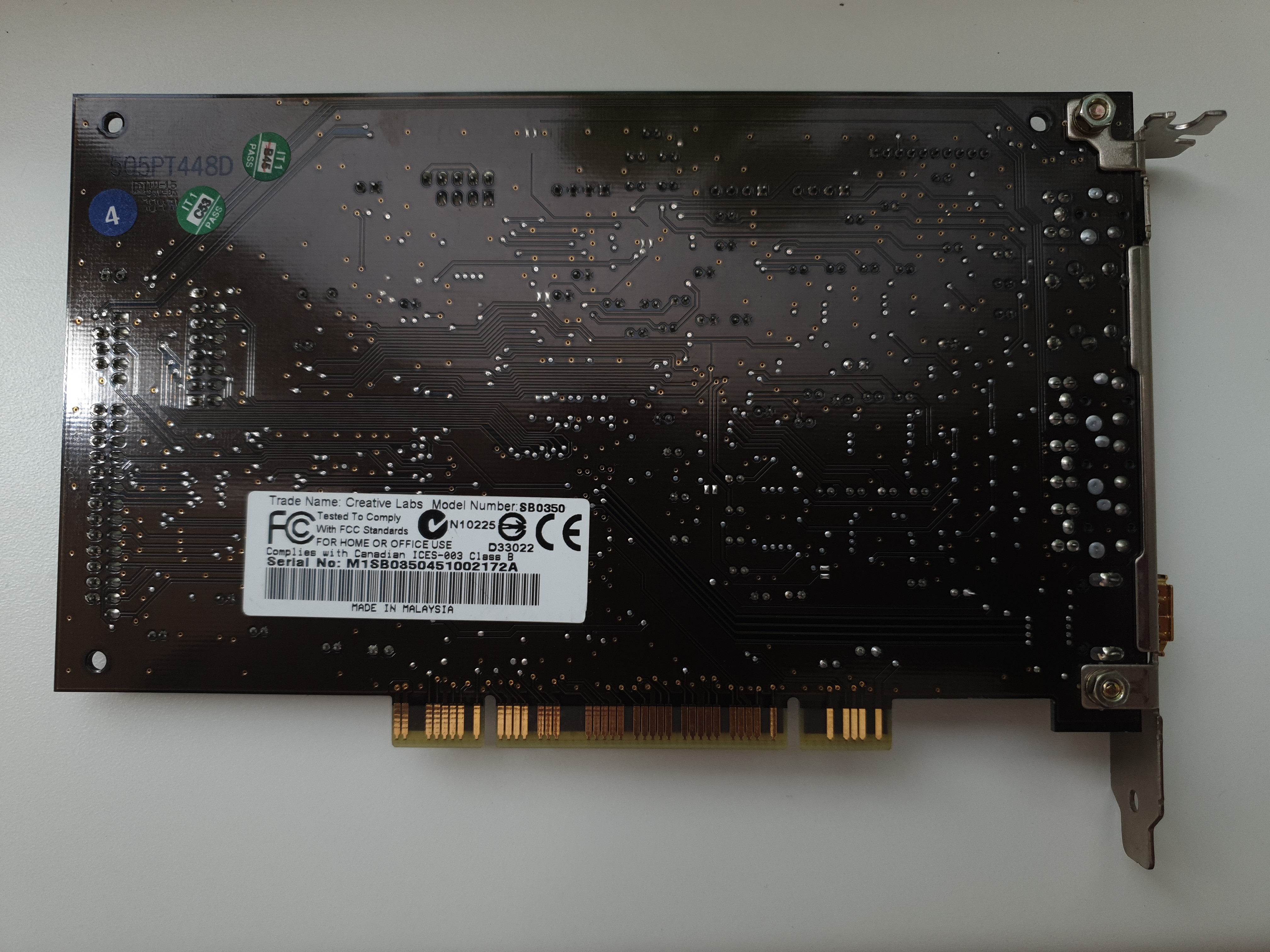
Sound Blaster Audigy 2 ZS (SB0350), ca. 2003
Bought in November 2020 for £10
Phil's Computer Lab recommends this card for Windows 98 retro gaming, though installation is a pain! Vogons Drivers website has the original CD.

Sound Blaster X-Fi (SB0880), ca. 2007
Unknown Origin
So far removed from the DOS gaming era, but I've included this PCI-e card in the collection as it's recommended by Phil's Computer Lab for Windows XP retro gaming.
Diamond Multimedia

Monster Sound (ca. 1998)
Unknown origin
The Diamond Monster Sound featured an Aureal Vortex 2 with its "A3D" surround sound support. It's a PCI card, so only good for Windows retro gaming, but it's nice to have something with the highly esteemed Aureal chipset on it. Also check out my dedicated page that lists out all the DOS games that support the various 3D positional audio technologies.
Ensoniq
At present I have two cards from Ensoniq:
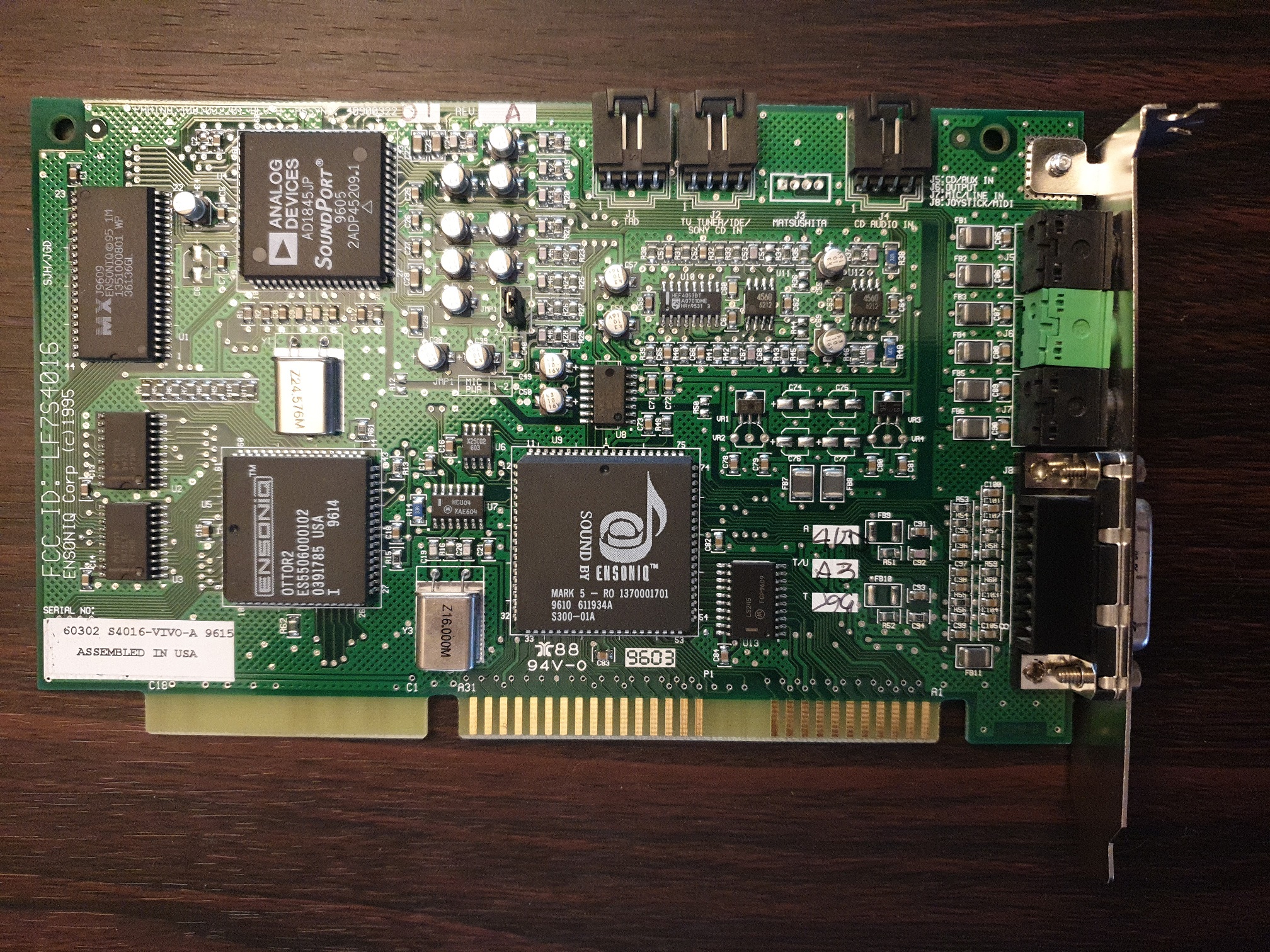
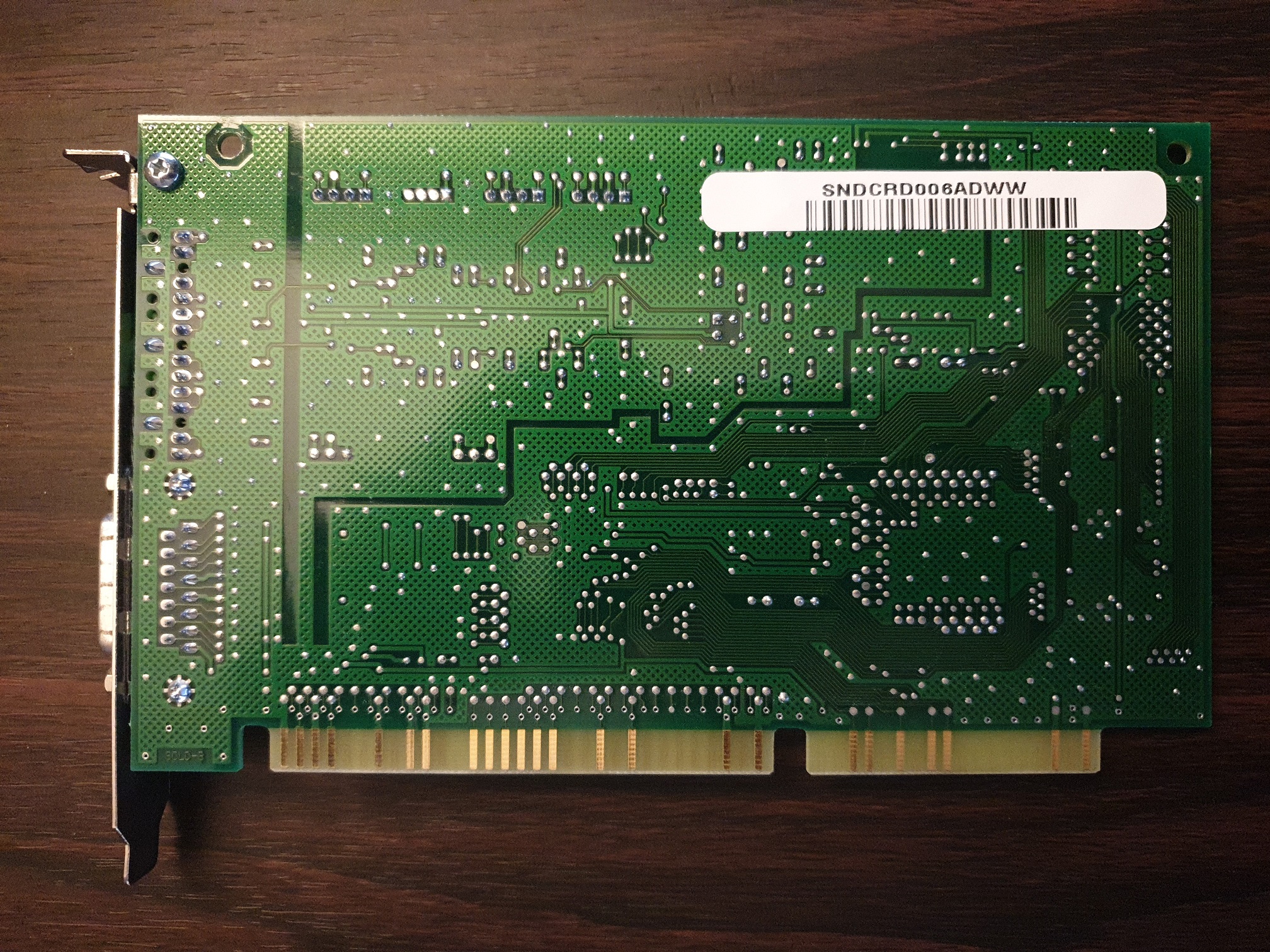
SoundScape VIVO (ca. 1996)
Bought in May 2022 for £35
Ensoniq's SoundScape range was well regarded in the mid 90s - of particular note was the high quality of its 2 MB onboard wavetable. This, coupled with full Ad Lib and Sound Blaster FM compatibility meant 1994's S-2000 was a great package to own for DOS gaming. The original SoundScape went through several cost reductions, starting with OPUS in 1995 and then VIVO in 1996, both of which came with a 1 MB wavetable. I have done a full Retro Review of this card.
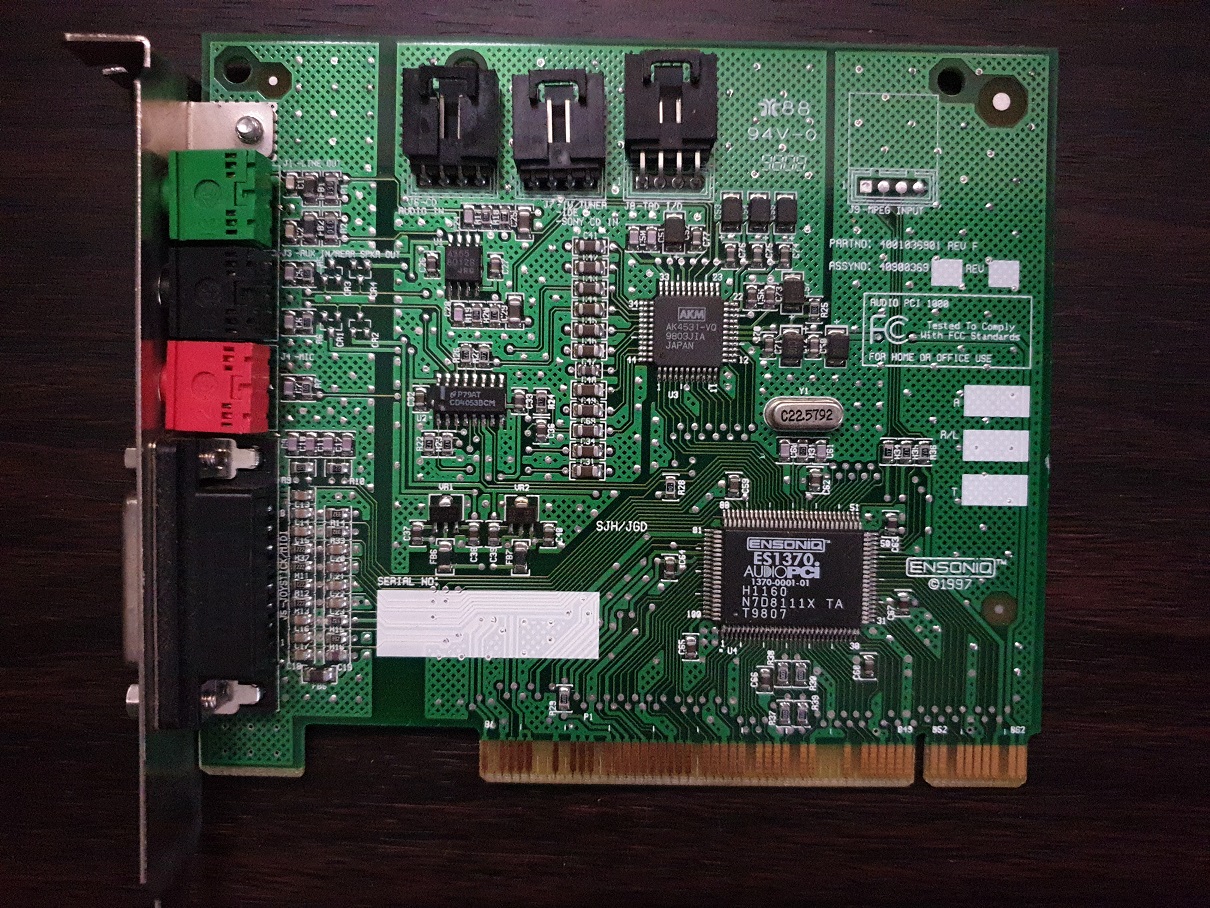
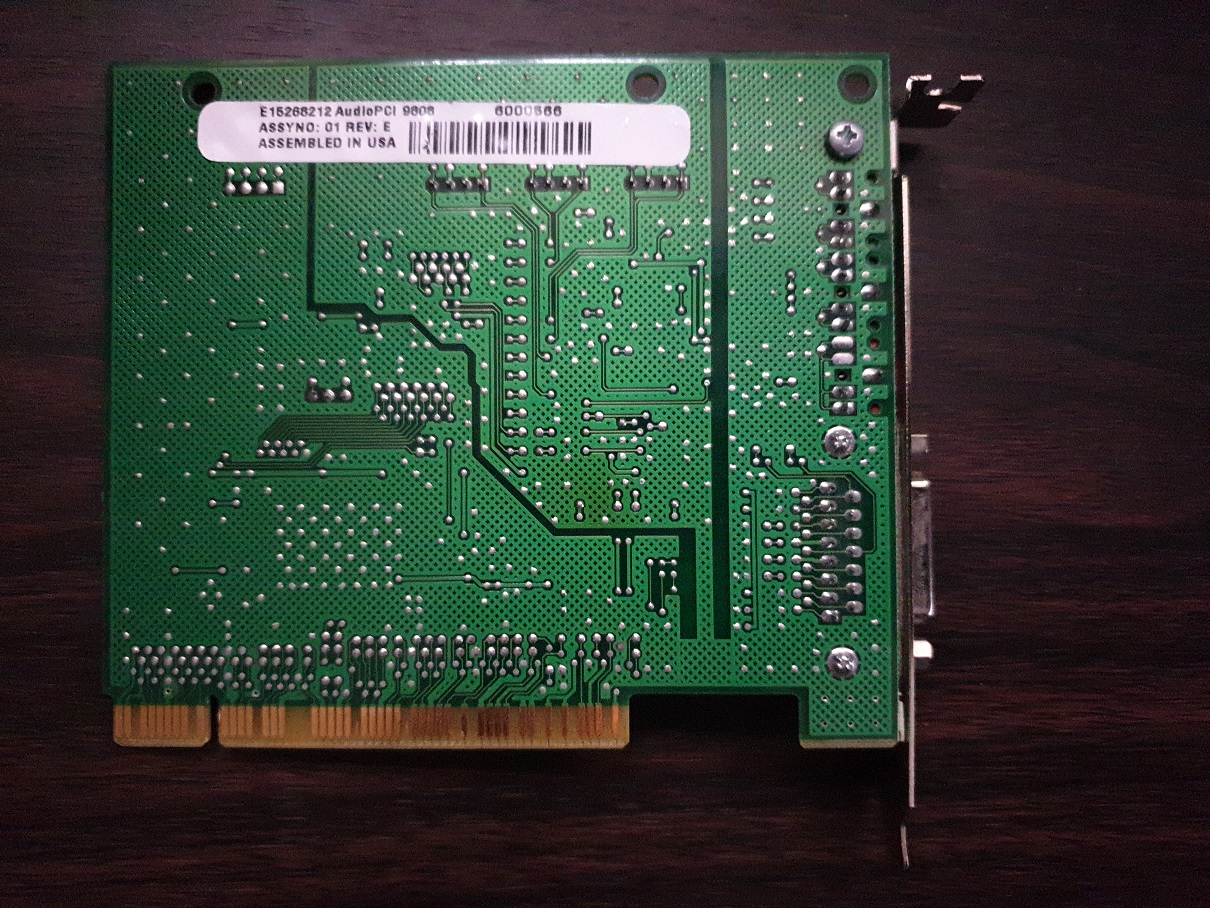
AudioPCI ES1370 (ca. 1997)
Came bundled in a mini tower PC I picked up in May 2018
I was very happy to find this PCI sound card inside the mini tower I bought. The ES1370 one of the few PCI sound cards that has excellent compatibility with DOS. Read my dedicated AudioPCI page for details. It supports Ad Lib, Ad Lib Gold, Sound Blaster Pro, General MIDI, Roland MT-32, and Microsoft DirectSound3D 4-speaker playback.
ESS
Really a chipset manufacturer rather than a sound card manufacturer, ESS chips can be found on a myriad of cards during the mid-90s. Both my ESS cards are basic versions that don't provide any wavetable header, nor even a game port (though the ES688 card appears to have a header for one so you could use a flying lead with a game port screwed into another backplate).
.jpg)
.jpg)
ES688F on a Pine Technology PT-201 card, ca. 1996
Bought in March 2024 for £15
The ES688F was the last chip from ESS Technology that did *not* come with their own flavour of OPL3 called ESFMTM(they started that with the ES1488). Ordinarily, ES688-based cards came with a separate Yamaha YMF262 or other official OPL3 chip and an associated DAC like the Yamaha YAC512, but in the case of the PT-201 it got an OPL3 clone in the form of the DXP44Q which is a little unique in that it also contains the DAC embedded on the chip. Another interesting design choice for this card is its wavetable connector that is mounted vertically on the far left of the card - this might be good if you have a tall but relatively narrow wavetable daughterboard. On the top left is the game port/MIDI header - it's a shame they didn't provide a port on the backplate for this, and you'd think this is a budget card because of that, but then it comes with a Line Out which is nice!
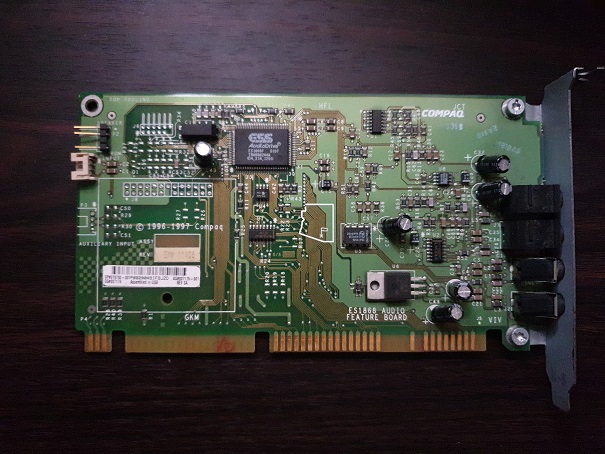
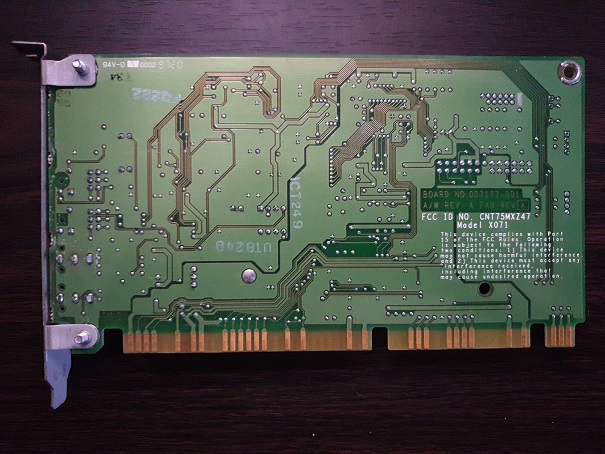
ES1868F on a Compaq Audio Feature Card, ca. 1997
Bought in March 2021 for £0.99
This was a pretty common card that was bundled in Compaq's desktops around the mid-90s. The little extra edge connector doesn't make any difference on a standard PC, so the card works just fine. The ES1868 was a later ESFMTMvariant in the range, so has full duplex, hardware mixing of 6 channels, PnP, and more. Like the card further up, this too doesn't get a game/MIDI port but unlike that one there isn't even a header for one to be added.
MediaColor
MediaColor were the audio subsidiary of DataExpert, the motherboard manufacturer who also had ExpertColor as their video card subsidiary. Their sound cards were usually a low-budget option, often being based on OPTi chipsets, though they did a few decent ones too.


MediaColor MED3931 (OPTi 82C931), ca. 1996
Bought for £15 in April 2023
This OPTi-based ISA sound card supports Ad Lib, Sound Blaster and Sound Blaster Pro standards.
Media Vision
PAS16s are getting quite rare (as are the original PAS cards), and when they do come up for sale they tend to be quite expensive so I was very pleased to pick this up for about £40. I did a full review of the Pro AudioSpectrum 16 when it arrived.
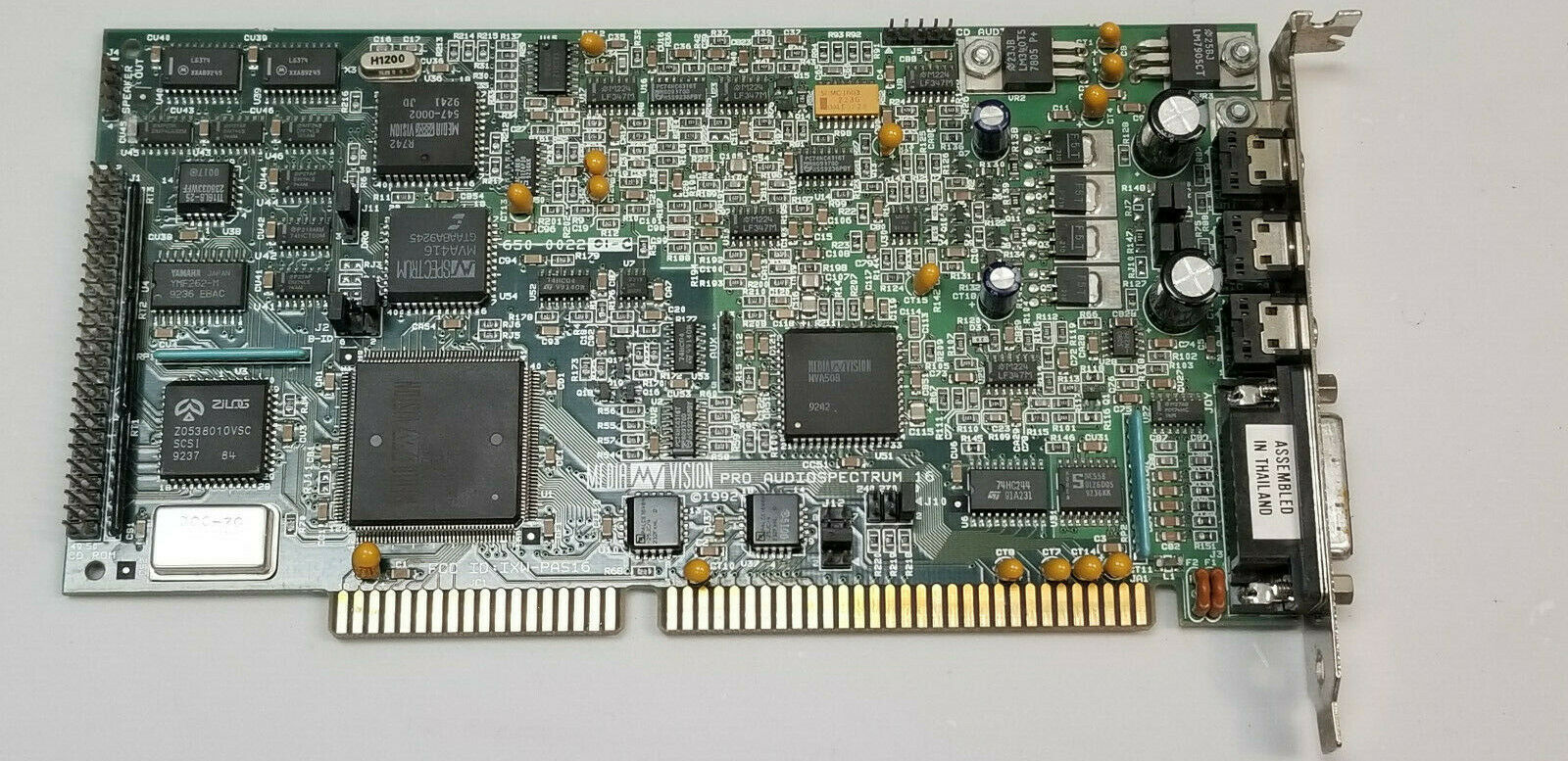

Pro AudioSpectrum 16 card, ca. 1993
Bought in November 2021 for
$65
This is a fantastic bit of kit, having a high signal-to-noise ratio and warranting its own sound standard with a good number of games titles supported. It supported Ad Lib via the onboard Thunder Board chip, but only Sound Blaster via emulation, though this was done to a high standard. My card seen above was the original version of the PAS16, whose only limitation is that the game/MIDI port is **not** MPU-401 UART-compatible (later model variants replaced the MVD101 chip with an MV201 that added this feature).
MediaTrix
A relatively short-lived Canadian manufacturer, MediaTrix produced some fantastic PC sound cards.
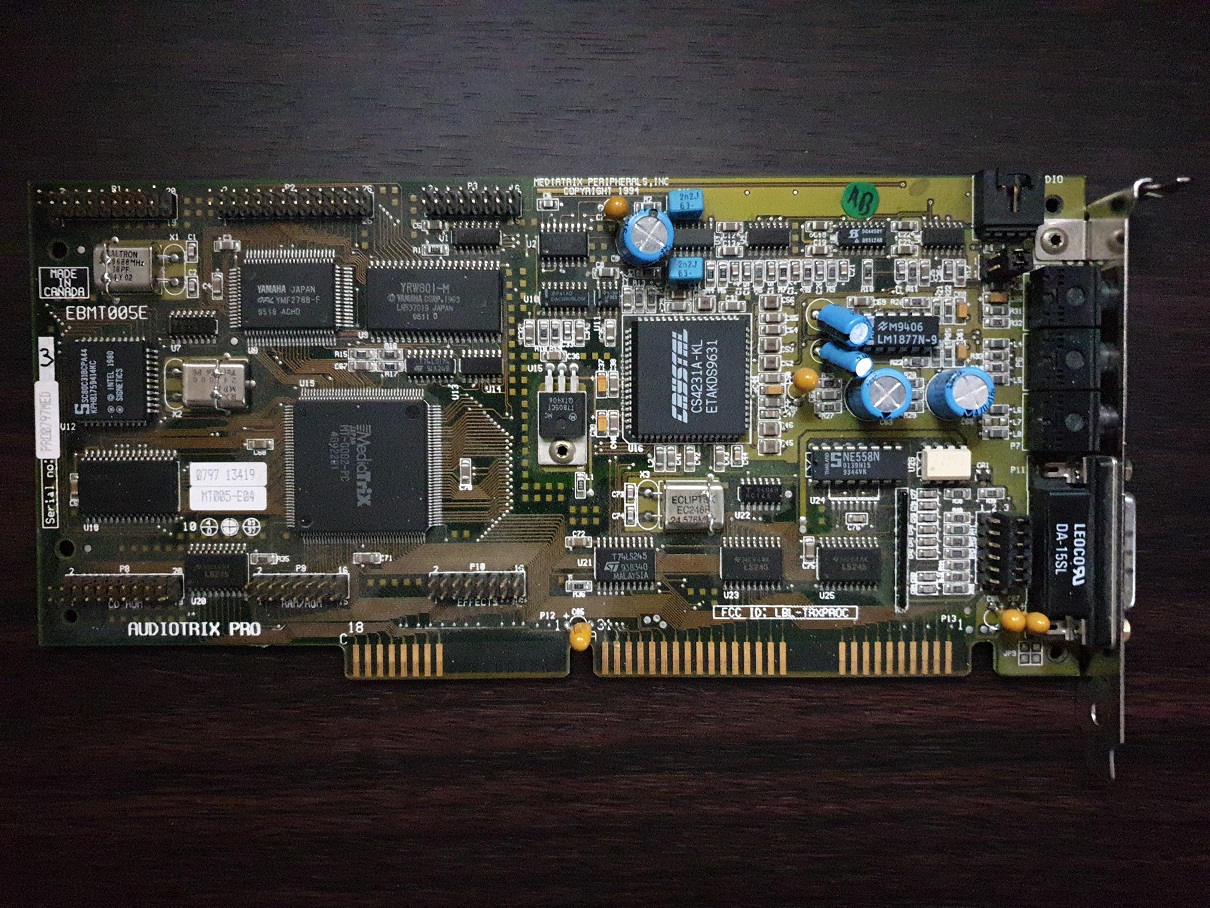

AudioTrix Pro
Bought for $122 around 2018
I have raved about this card quite a bit here at DOS Days. With its clean output, the combination of onboard wavetable coupled with Sound Blaster Pro 2.0 compatibility, it's a great single-card audio solution for DOS gaming. Couple it with a Roland MT-32 and an SC-55 or SC-88 and you have all bases covered.
Multiwave
Multiwave's audio line mostly leveraged a partnership with ESS for their cards' chipsets, but the only card I have is based on Crystal Semiconductor's CS4231 and a Media Vision Thunderboard chip, which gives the card Ad Lib, Sound Blaster, and General MIDI capabilities.
.jpg)
.jpg)
Multiwave Audiowave 16 AISP (SCSI), ca. 1996
Bought for £59 in April 2023
This is an interesting card because of its use of the Thunder Board chipset from MediaVision as well as a Crystal CS4231KL. I did a more complete walkthrough on this card in November 2023.
Orchid
Like Diamond Multimedia, Orchid were always better known for their graphics cards but they dipped more than a toe into the sound card market also.

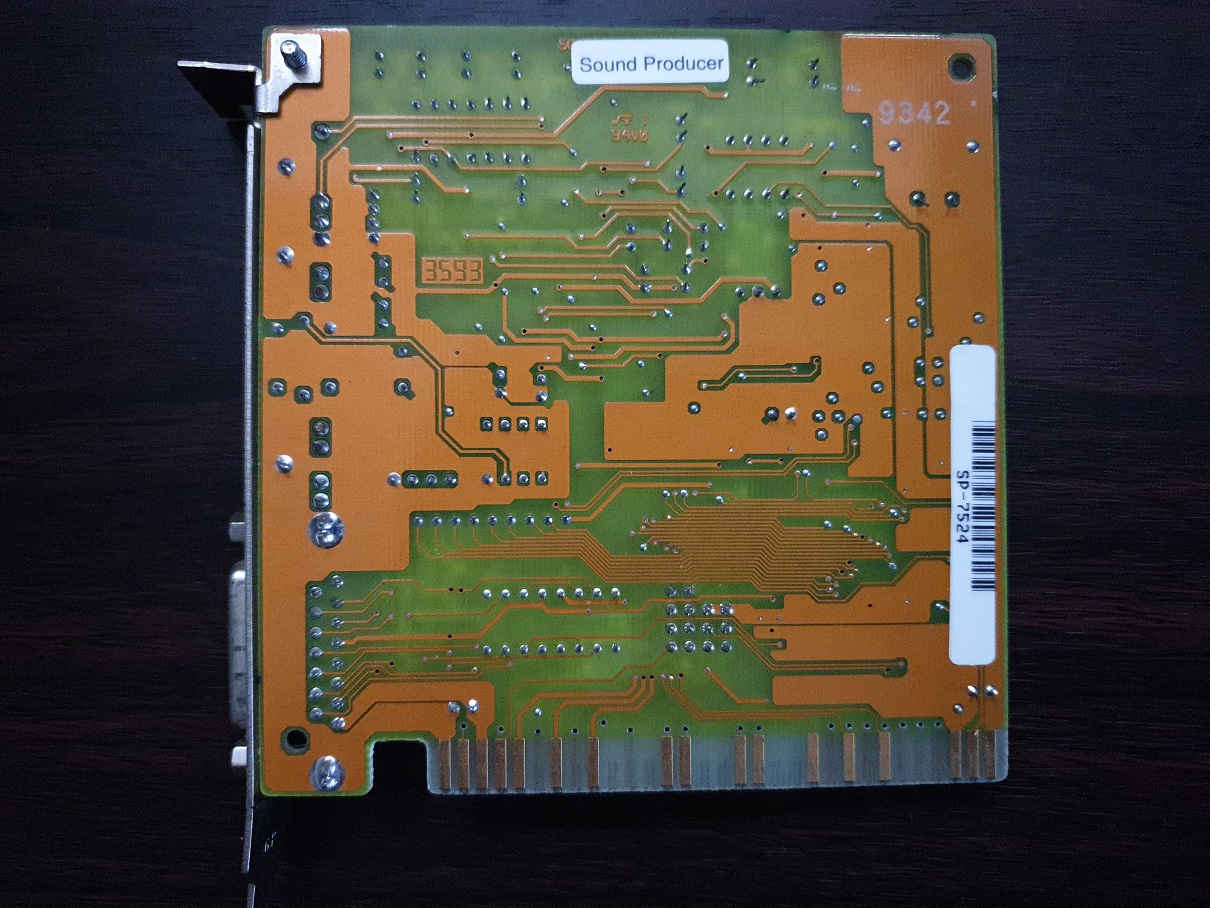
Sound Producer, ca. 199x
Bought around 1993 or 1994 as a birthday present for my Dad
to upgrade his Amstrad PC2286 to Sound Blaster standard
The Orchid Sound Producer was a simple Sound Blaster-compatible card, based off the reference design of the Aztech Sound Galaxy BX II.


Orchid NuSound 32PNP, ca. 1995
Bought for £35 in June 2023
The NuSound 32PNP is based on the Crystal Semiconductor CS4232 and Crystal/Dream SAM9233, providing Ad Lib, Sound Blaster Pro and General MIDI support.
Orpheus 1
Orpheus 1 was a project undertaken by two Vogons forum members. Its intent was to be the best DOS ISA gaming sound card for the modern era.
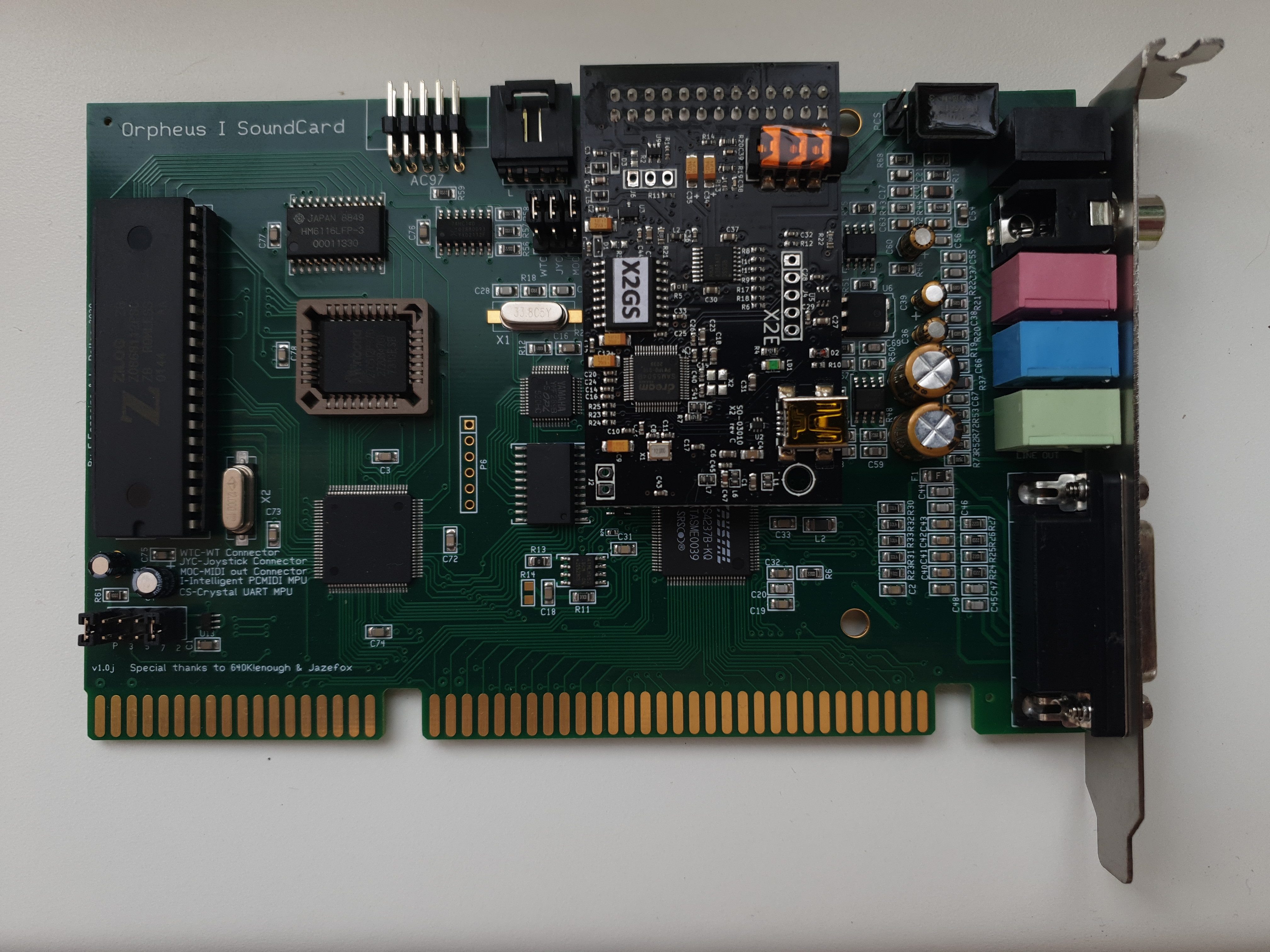

Orpheus 1 card with DreamBlaster X2GS daughterboard attached, ca. 2021
Bought in May 2022 for £230
I started a review of the Orpheus 1 card in August 2022. You can read it here.
Roland
External synthesizers were not something I could afford back when they were new. I have since managed to get hold of five of these: four from Roland and the Yamaha listed further down.

MT-100 External MIDI device
Bought in December 2018 for £68
The MT-100 above was the first external MIDI device I purchased, while on the hunt for an MT-32. The proprietary floppy drive doesn't work but that is only required to save and load sequences (something not required for DOS gaming) - the rest of it functions really well as an MT-32 "new".
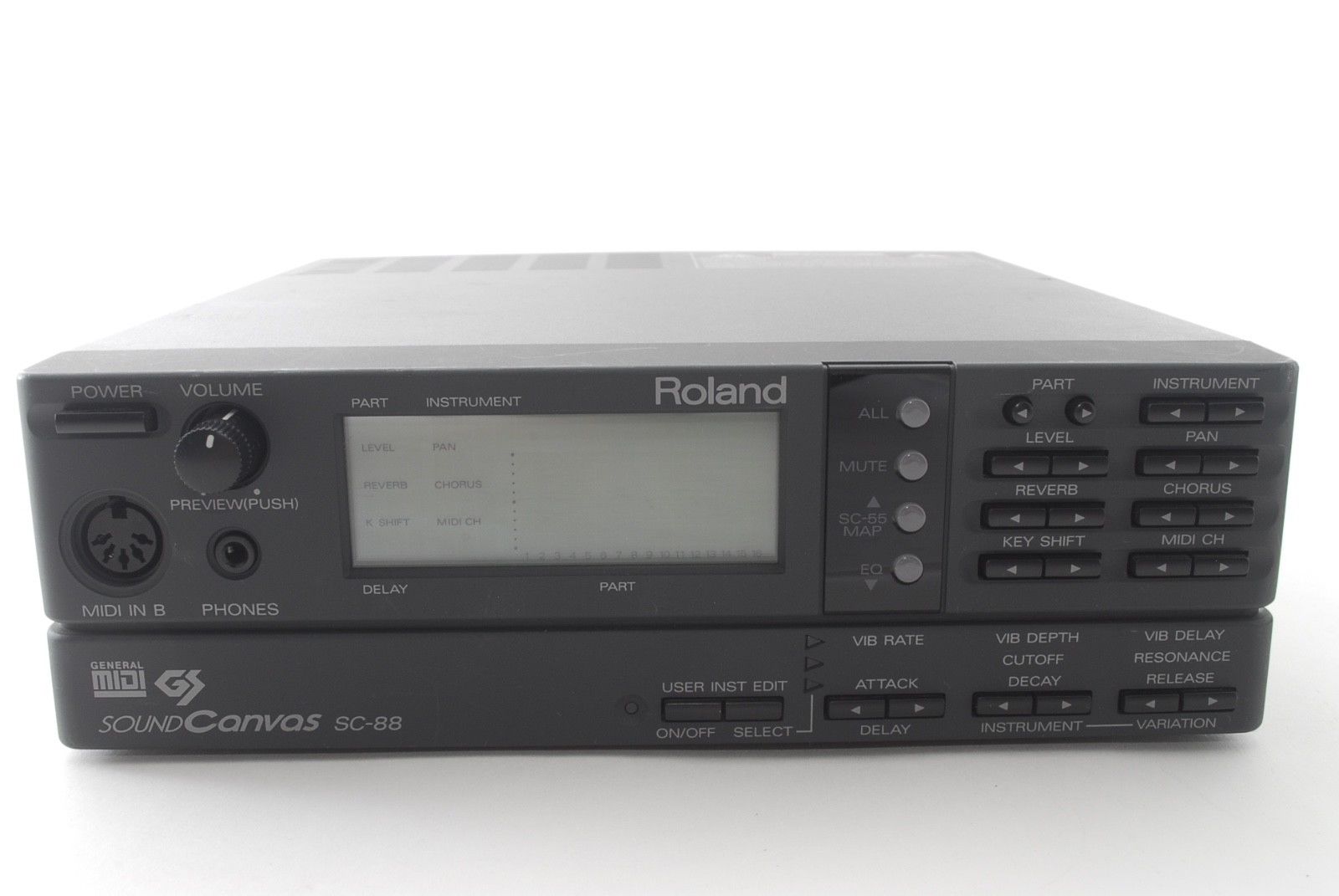

SC-88 External MIDI device
Bought in November 2017 for £70 + £30 shipping from Japan
The SC-88 was bought while I was ideally looking for an SC-55 Mk.1 or Mk.2. This came up at the right price, cheaper than any SC-55 at the time. Strangely it was a 110V unit, so I also bought a step-down transformer to allow it to function here in the UK.
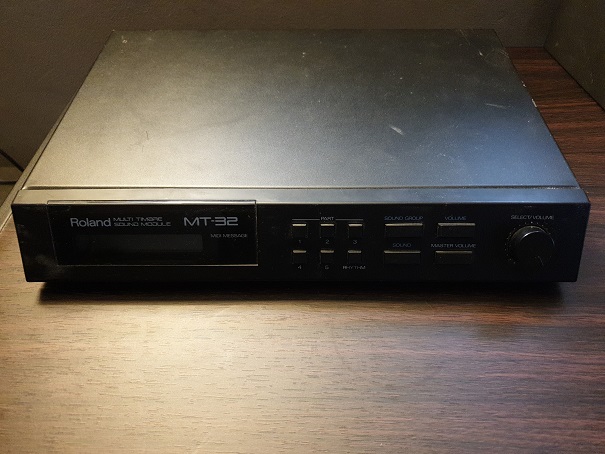
MT-32 "Old"
Bought in December 2018 for £102
The MT-32 "old" is an absolute necessity for early Roland-supported games, as the MT-32 "new" and MT-100 do play some odd notes on these games due to the fact that Roland moved some instruments around between old and new model variants. I was quite happy to pick this one up for about £100, especially as it came in its original box with manual and power supply!

SC-55 Mk.1
Acquired in February 2021 for £FREE!
This SC-55 was bought in "Tested, Working" state but came with no PSU, and when I tested it, it was in fact dead on arrival. I offered to return it to the seller, but they weren't interested in receiving it back, so gave me a full refund! I opened it up and replaced a diode that had blown - it now works just great as my fifth external MIDI device.
Serdaco BVBA
In the present day, Serge designs and builds numerous retro hardware goodies for the PC, and sells them via his online store, Serdaco BVBA. I bought the parallel port sound card bundle.
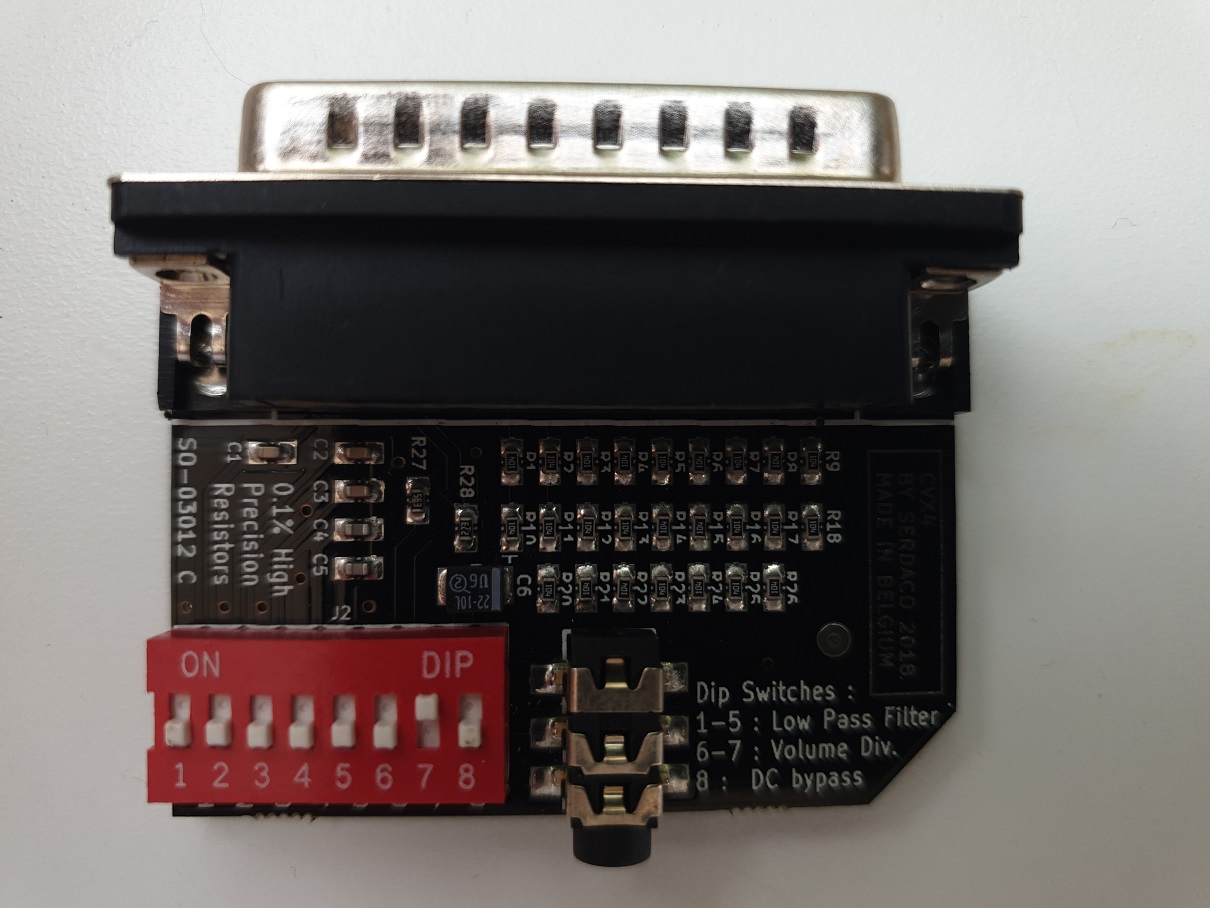
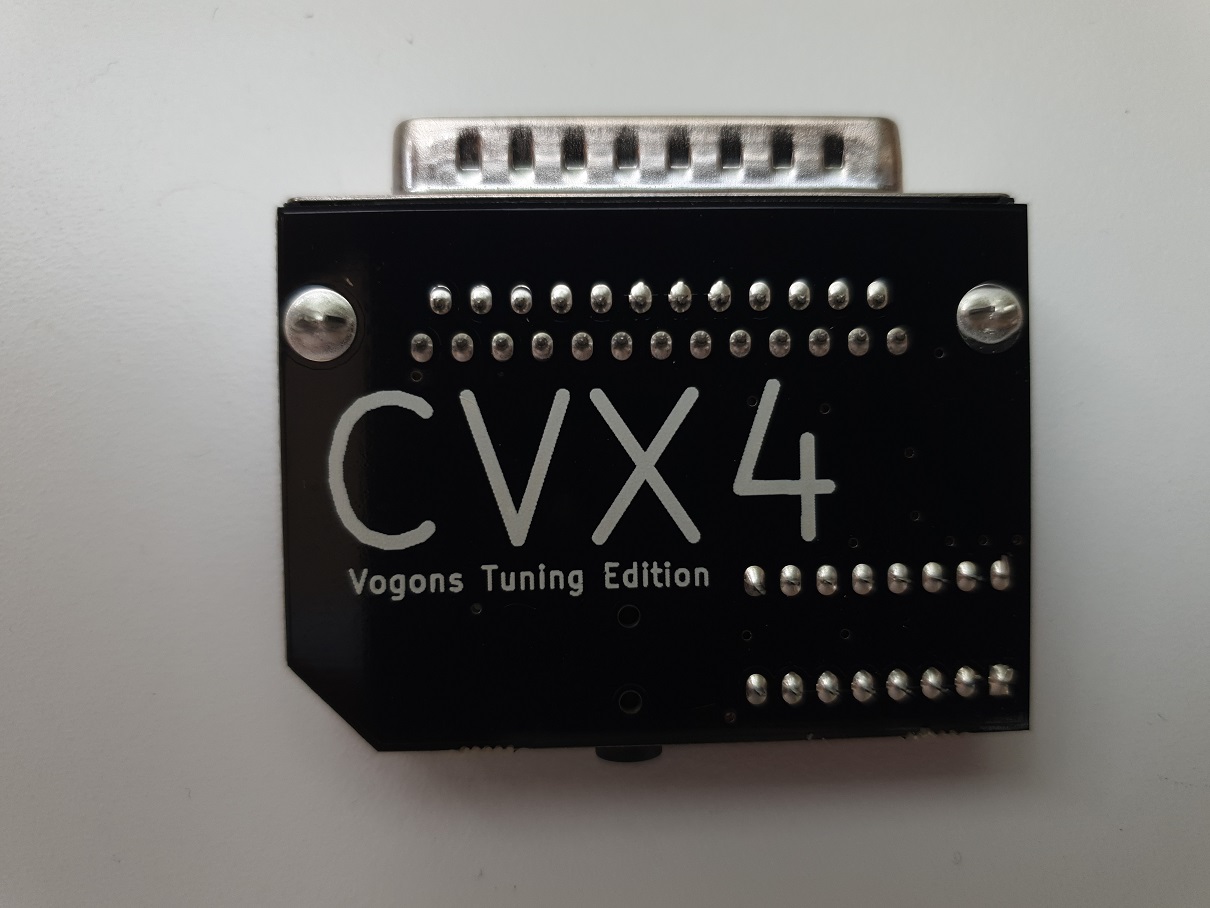
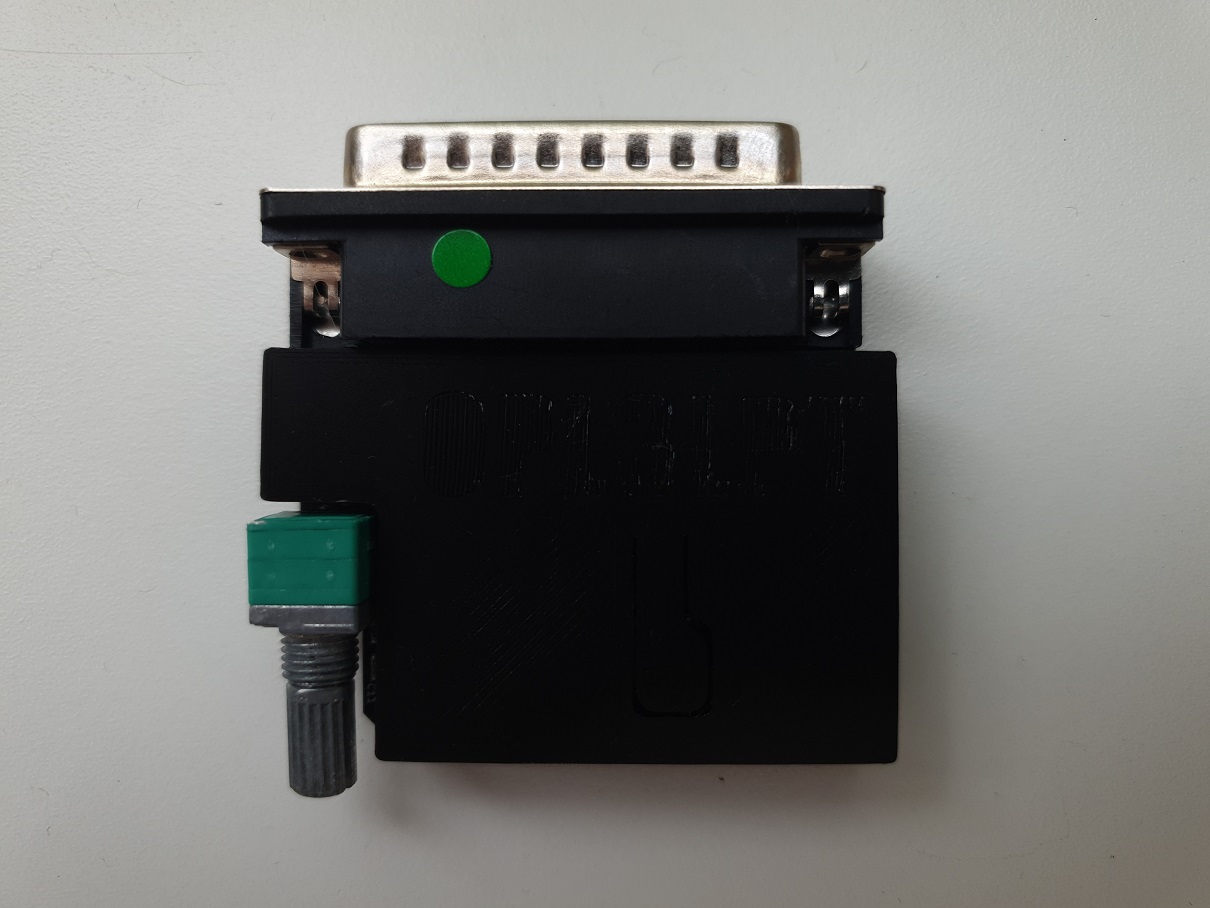



CVX4 (Covox Speech Thing), OPL3LPT and DreamBlaster S2P, ca. 2018
Bought in 2020 for €90
Yamaha
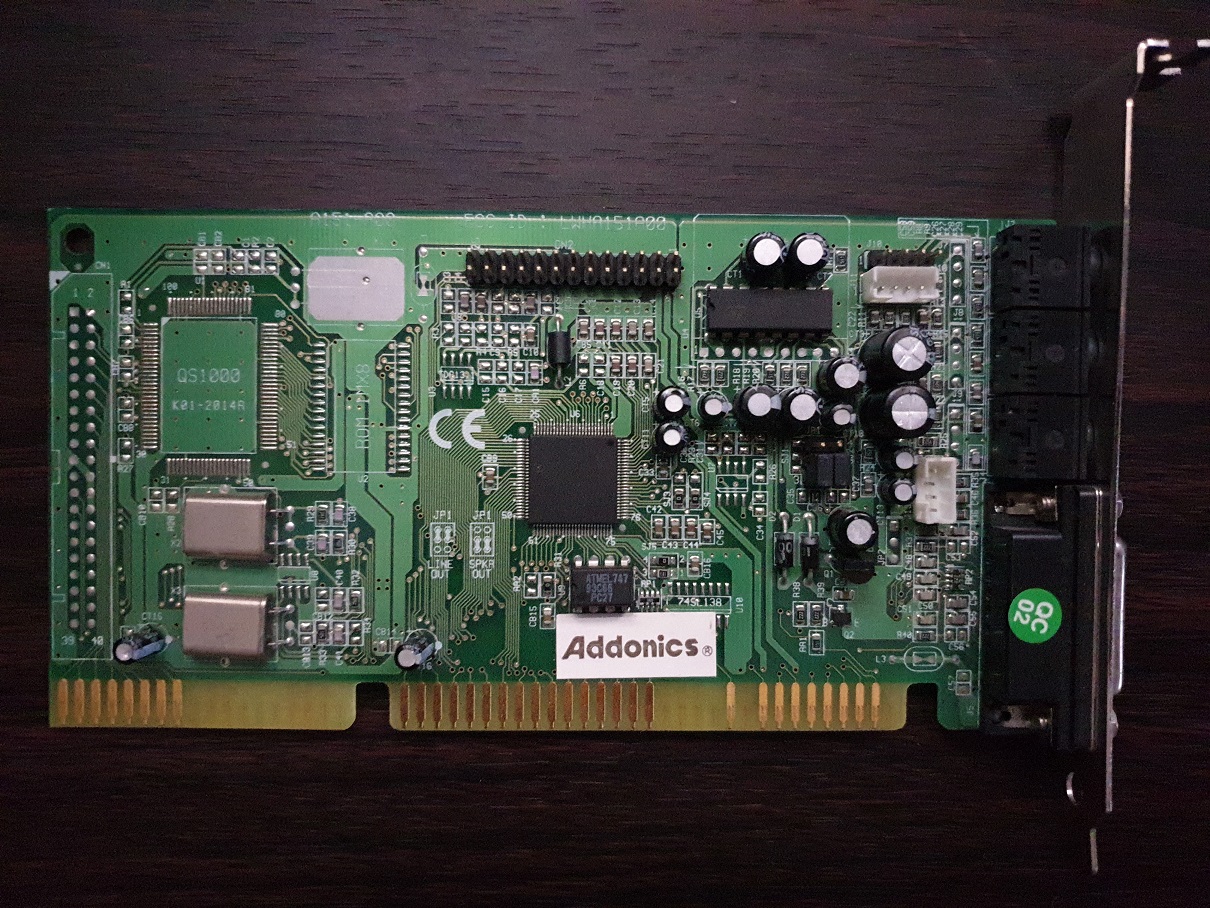
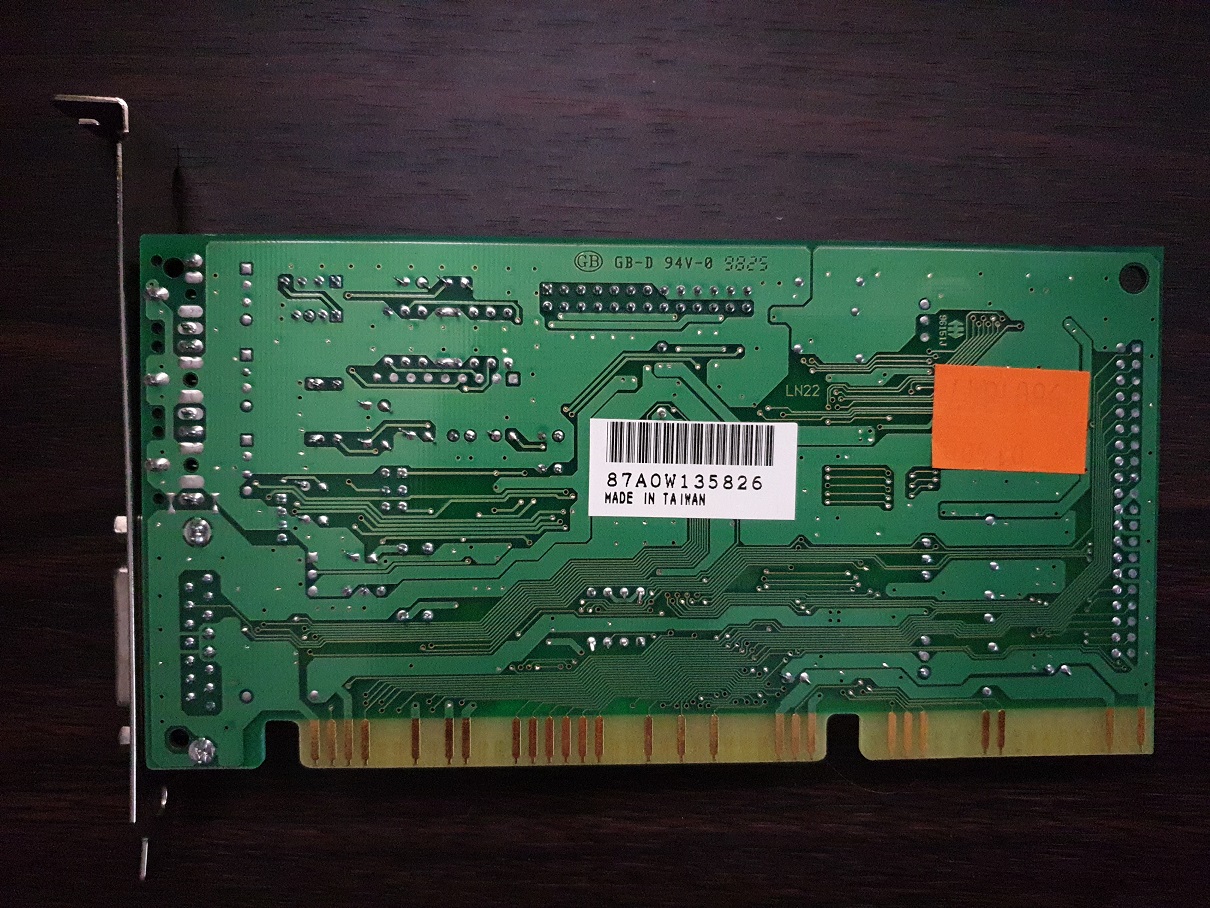
Addonics A151-A00 card
Bought for £10 around 2017
This card is a rebranded Yamaha Audician 32 Plus. Based on the Yamaha YMF718E-S, it supports Ad Lib and Sound Blaster Pro 2.0 standards. I wrote a full review of this card in January 2023.
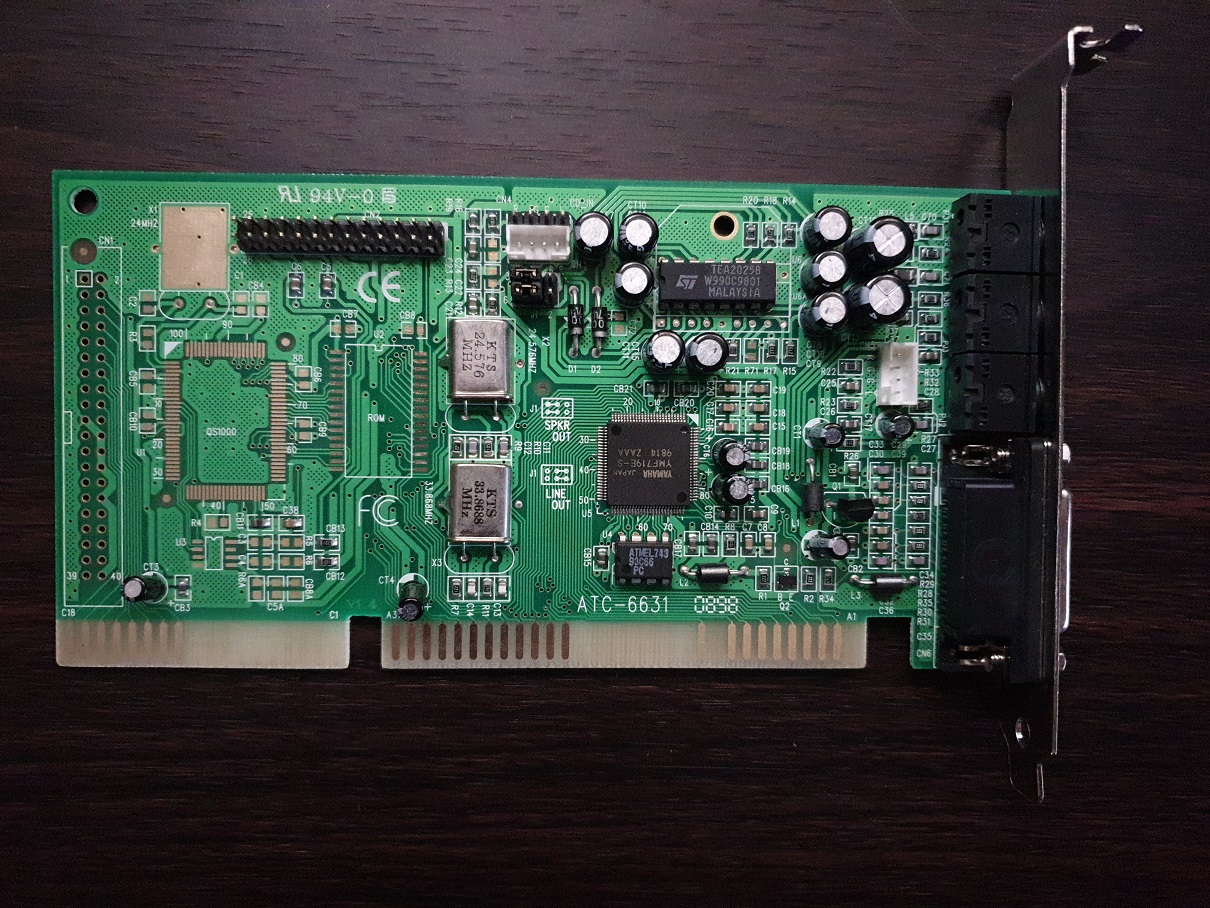

A-Trend ATC-6631 card
Bought for £16 in late 2021
I bought this card after believing my Addonics A151-A00 one was faulty, with strange sounds coming in when playing back some samples, but this card has identical output. More investigation needed! The A-Trend ATC-6631 is another clone of the Yamaha Audician 32 Plus which has a Yamaha YMF719E-S (basically a YMF718E-S with added Ymersion virtual 3D surround from 2 speakers).

MU80 External MIDI unit
Bought for £96 in February 2021
The Yamaha MU80 is considered one of the best external MIDI synthesizers money could buy if you were a PC gamer. Having bought a Roland SC-88 several years earlier, I was keen to hear the differences that Yamaha units brought. The best way I can describe it (and I'm no audiophile) is that it's more 'rocky' and '80s synth music' than the Roland devices that are more 'classical' and 'clean'. I have made a number of recordings from games where you can compare the MU80 to other GM devices - have a look at my dedicated game pages for Descent, Duke Nukem 3D, Dune, and Gabriel Knight for some examples.